This site uses cookies. View our Cookie Policy to learn more about how and why.
This site uses cookies. View our Cookie Policy to learn more about how and why.
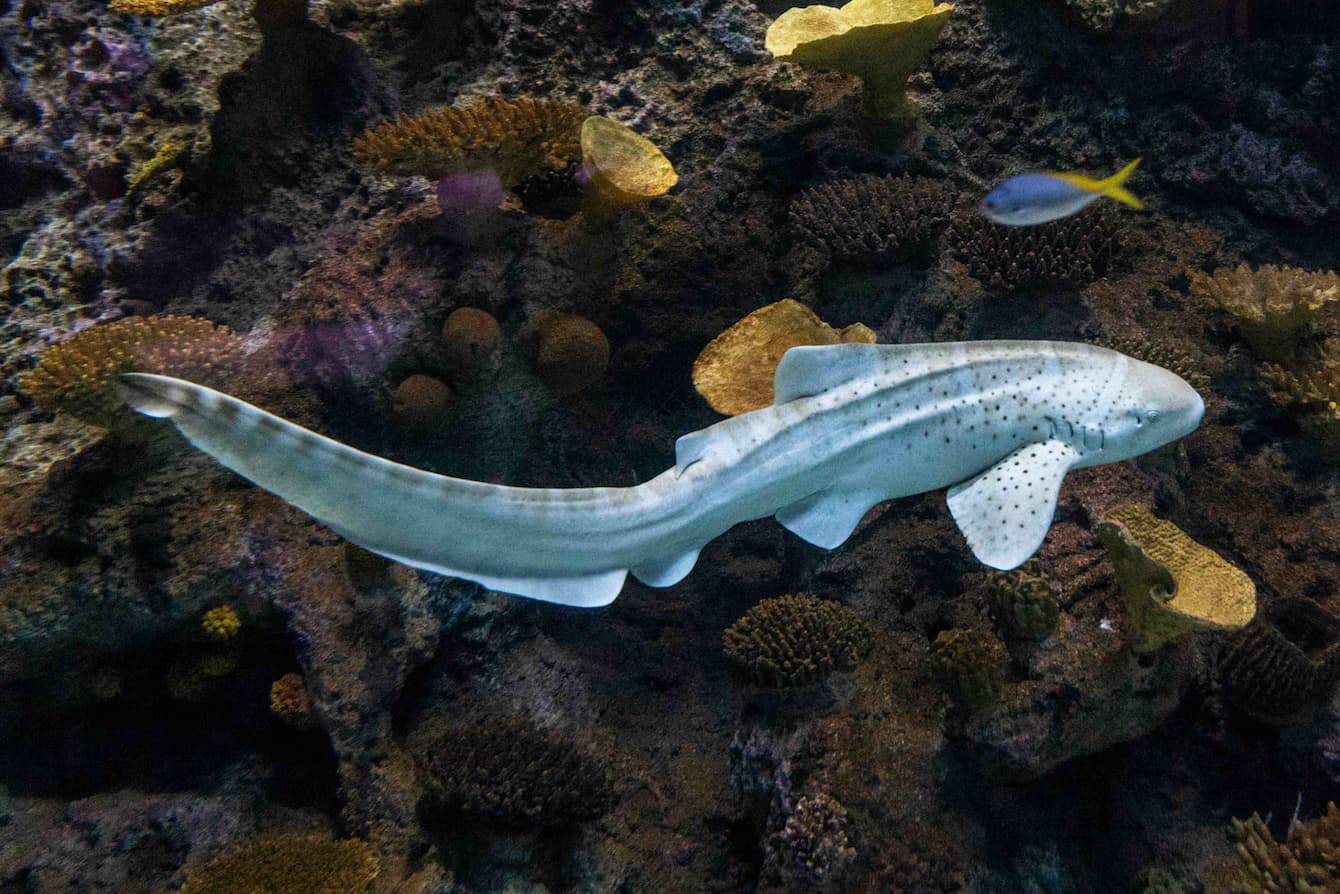
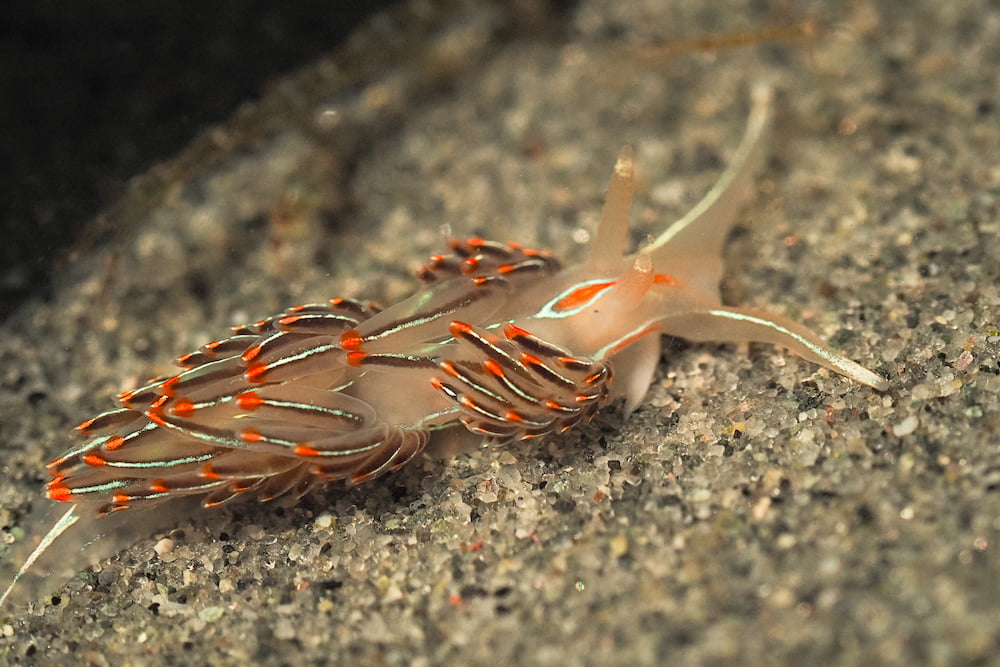
Summer is here! And you’ve still got time to meet Seattle Aquarium beach naturalists on local shorelines to discover the amazing animals that live in the intertidal zone, aka where the water meets the land between high and low tide. (Check the schedule here!)
Nudibranchs are among the many fascinating creatures you may encounter on the beach at low tide. You can also get to know some nudibranch species in a number of habitats at the Seattle Aquarium.
But wait! Are you wondering, “What’s a nudibranch?” It’s a fair question. You may also be thinking, “How do I pronounce that word?” We can help with that too!
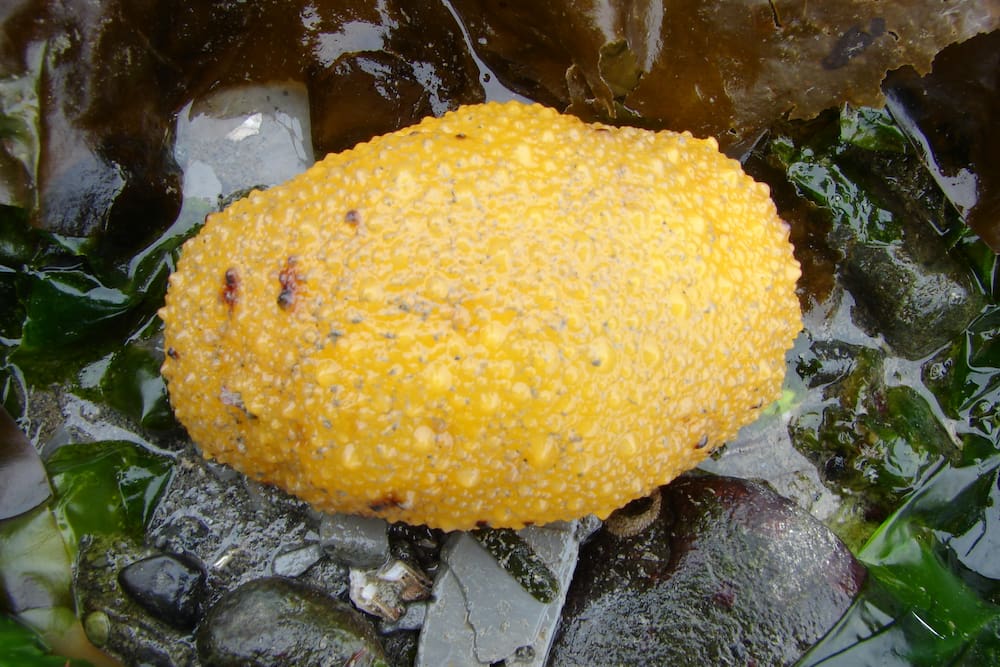
Is that a lemon nestled into the kelp? Almost! It’s a species of nudibranch called a sea lemon. It’s among the nudibranchs you can see and learn about at the Aquarium—and you may be able to spot one on a local beach at low tide as well.
First things first: Nudibranchs are members of the sea slug family. They’re mollusks, related to bivalves (meaning animals with two shells) like clams, mussels and oysters, as well as single-shelled animals like chitons.
But unlike those cousins, nudibranchs don’t have shells.* So you could technically think of them as naked sea slugs. After all, their name does start with the word “nude” (minus the “e”)!
All kidding aside, the name nudibranch means “naked gills.” It refers to the external gills or feathery-looking appendages that many nudibranch species display on their backs.
And how do you say their name? NEW-de-bronk. If you’re admiring more than one of these fascinating creatures, it’s NEW-de-bronks (never NEW-de-branches!).
*Well, the adults don’t. Larval nudibranchs have shells but shed them as they mature.

You can also get to know the opalescent nudibranch when you visit the Seattle Aquarium.
Scientists estimate there are over 3,000 nudibranch species. They’re found worldwide—in cooler, temperate waters like those in Puget Sound, tropical waters like the Coral Triangle and even the frigid waters of the Arctic and Antarctica. They live at depths ranging from the intertidal zone to over 2,000 feet below the surface. And they come in incredible variety of shapes, colors and sizes, from a fraction of an inch to about the size of a football.
That’s a lot of differences! But the majority of nudibranch species share some common characteristics—in addition to the soft bodies, lack of shells and external gills that inspired their common name, that is.
For one, most nudibranchs have a pair of sensory tentacles on their heads, called rhinophores, that help them detect chemicals in the waters (similar to how your nose helps you detect odors in the air). They’re carnivores, preying on animals including sponges, barnacles, anemones—even other nudibranchs! And they have both male and female reproductive organs.
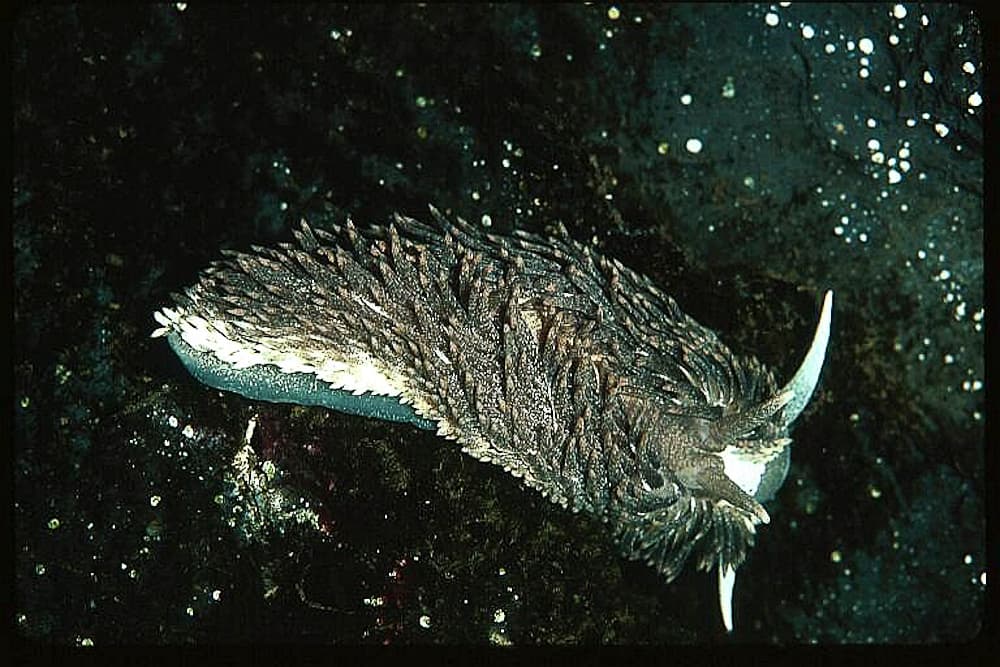
It’s easy to see why the common name for this nudibranch species is “shaggy mouse!”
There’s much more to learn and love about nudibranchs, and the Seattle Aquarium is a great place to start. You can chat with our volunteer naturalists on the beach this summer or visit the Aquarium to strike up a conservation with one of our knowledgeable interpreters—just look for the folks in blue shirts!
And, no matter how far away you are from the ocean, you can make a difference for the animals that live there, including nudibranchs. A few ideas: Contact your legislators to urge support for legislation that protects ocean health. Use public transportation, fly less and limit your use of single-use plastics. Looking for other ideas? Volunteer naturalists on the beach and interpreters at the Aquarium are a great source for those too! You can also check out our act for the ocean webpage.
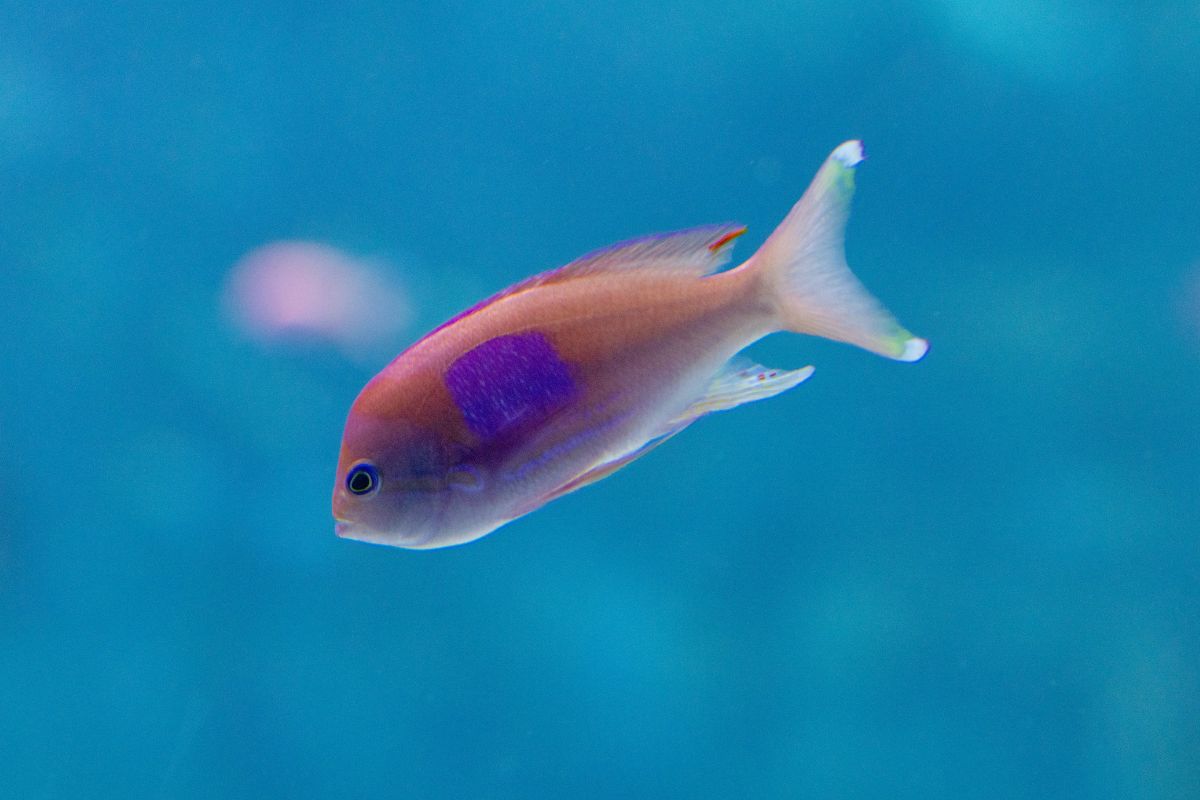
Pride Month is a great time to appreciate queerness in all its powerful beauty in our human communities. But just like in cities and towns across the world, the ocean is abundant with queerness all year long! Many different marine species—including some found at the Seattle Aquarium—naturally display queer behavior.
Queer is a term reclaimed by some members of the LGBTQIA+ community, and it carries a long and complicated history. In this story, we take it to mean a living being who is not strictly heterosexual and/or cisgender.
You may have heard of Roy and Silo, a pair of male penguins at New York’s Central Park Zoo who paired up for many years and even raised a chick together. But those queer penguins are just the tip of the iceberg!
Same-sex partnerships have been documented among seabirds. In one studied group of albatrosses in Hawaiʻi, nearly a third of bonded pairs were female-female. Like male-female pairings, these birds took turns incubating a single egg while the other went off in search of food.
At the Seattle Aquarium, female tufted puffins Gil and Gertie have been bonded for over five years. During mating season, Gil and Gertie engage in billing, a flirtatious move when puffins tap on each other’s bills, and stacking, a breeding behavior where they stack several small fish in their bills. They also gather materials to build a nest together and spend a lot of time with one another.
While tufted puffins often return to the same mate, puffin “couples” like Gil and Gertie could change in the future due to new social dynamics. Just like humans, animal relationships can change.
Tufted puffins Gil (front) and Gertie (back) act as a bonded pair, spending a lot of time together and displaying flirtatious behavior at the Seattle Aquarium. Video credit: Animal Care Specialist Ana.
Dipping below the waves, many other animals also form same-sex pairs. Both male and female dolphins of multiple species—notably, bottlenose dolphins—engage in same-sex mating behavior, sometimes with multiple partners. Young male orcas split off from their pods to spend time wooing each other. Just last year, for the first time scientists directly observed humpback whales mating—and the participants were both male!
Many marine invertebrates, from corals to jellies, can reproduce asexually, aka without a mate.
Sea stars are well known for being able to regrow a lost arm. But for some species, that detached arm can grow into a whole new individual, so long as it retained some of the original star’s central disk. One known genus, Linckia, can reproduce asexually by dropping an arm even without the central disk.
Eye-catching sea slugs known as nudibranchs often sport multiple colors on their bodies. And they sport multiple kinds of reproductive organs too! Nudibranchs have both male and female reproductive organs. They can partner up with any other member of their species and some can fertilize each other simultaneously.
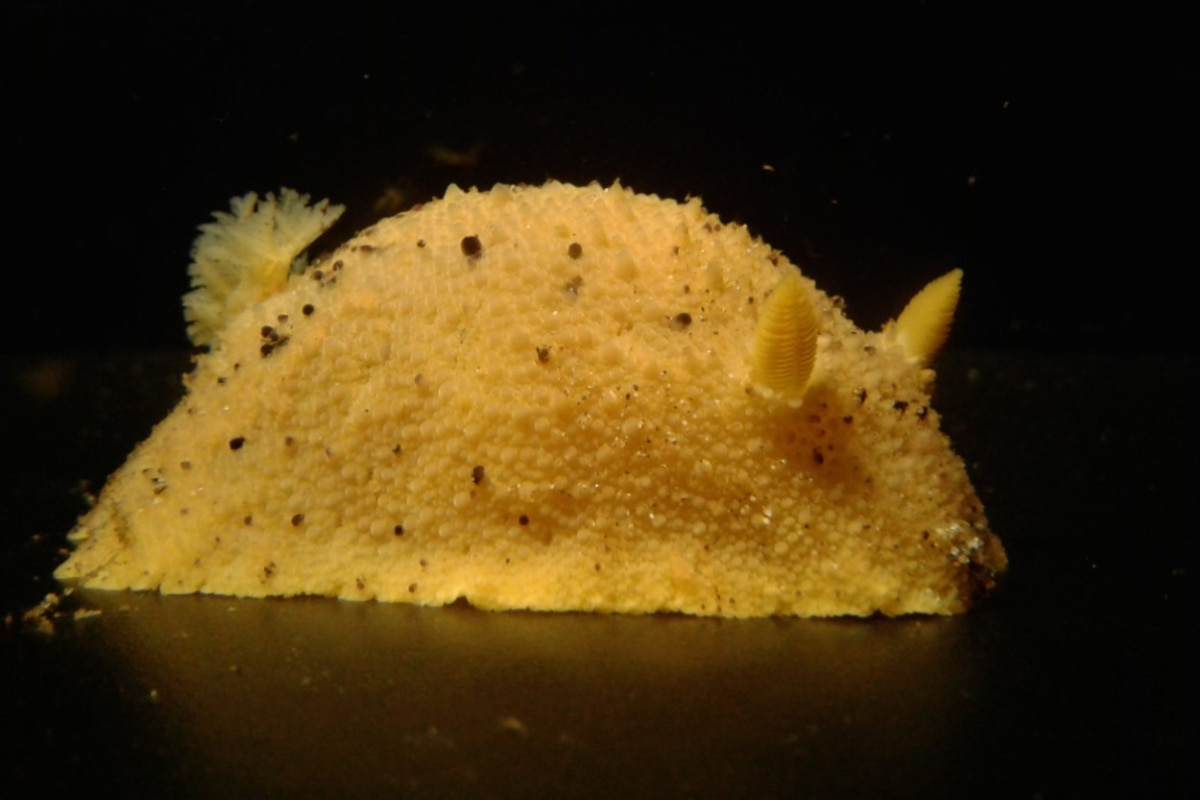
Nudibranchs, like this sea lemon, who can be found at A Closer Look, have both male and female reproductive organs.
While many invertebrates can reproduce asexually, scientists consider it unusual behavior in more complex animals. But females from some species of rays and sharks, including Indo-Pacific leopard sharks, can bear offspring without any male assistance. This rare and delicate process is called parthenogenesis. It’s been well-documented among sharks and rays in human care, but more research is needed on how common it is in the wild.
As the saying goes, there’s plenty of fish in the sea. And over 500 of those species can change their sex! Some fish change sex permanently at a specific point in their lives, while others, including the blue-banded goby, can transition back and forth. One known species, the mangrove rivulus, can even self-fertilize.
Going from female to male, a process called protogyny, is the most common way fish change sex. Squarespot anthias all start out life as females and develop their namesake squarespot when some transition to male.

All squarespot anthias, a fish you can meet at the Ocean Pavilion, are born female. Some transition to male and develop the namesake purple square spot.
For clownfish, protandry, or transitioning from male to female, is the way of life. The two largest fish in a group are the reproductively mature male and female. The fish in their home anemone are all male juveniles. Should the female die, the current breeding male will transition to female and the next largest male will mature to take his place.
These are just a handful of the many species who showcase the beauty and diversity of marine life. From birds in the sky to benthic sea stars, queerness is as natural as the ocean itself.
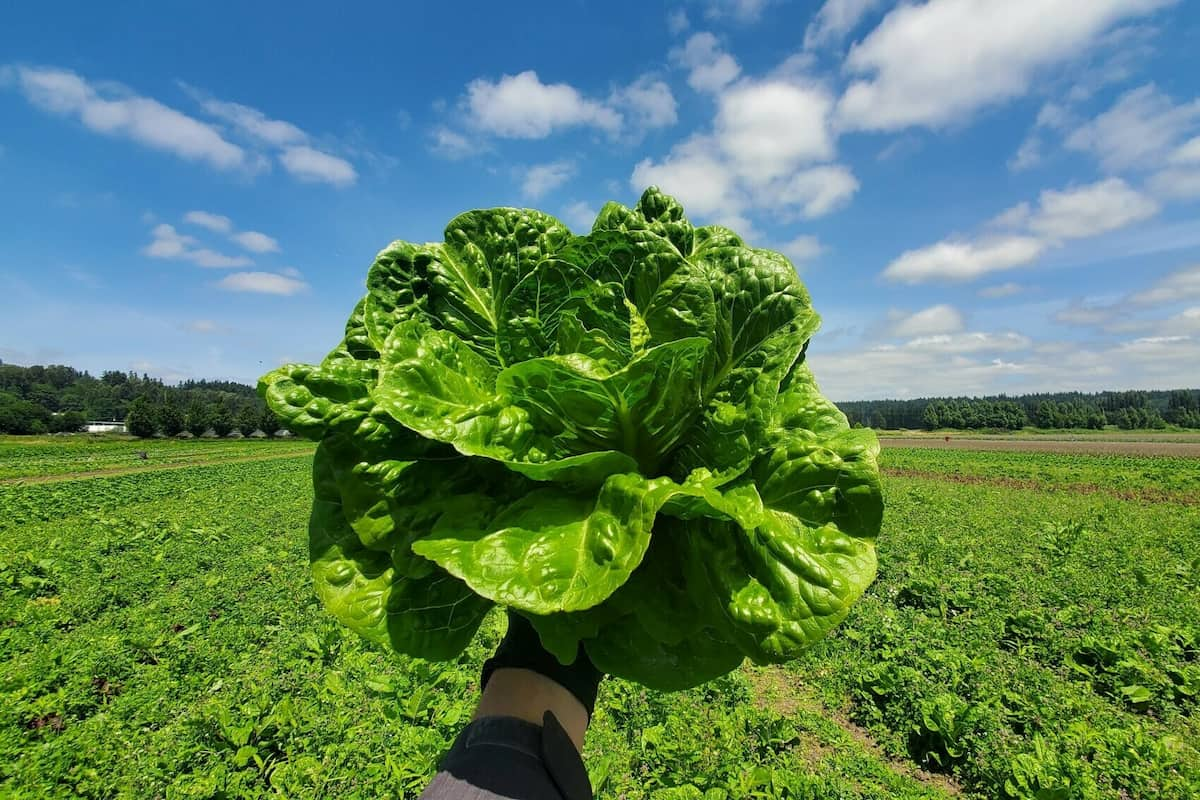

Compostable packaging from the café ends up helping local farmers grow lettuce and other produce—which then gets served at the café! Photo credit: Sound Sustainable Farms.
When you sit down to enjoy a delicious lunch in the Seattle Aquarium Café, there’s a chance that the lettuce on your burger was grown using “trash” from the Aquarium.
As a part of our vision to become a regenerative institution—one that gives back to the environment more than we take from it—the Aquarium has a complex relationship with “trash.” We know it well. That’s because we work to divert as much “trash” as we can from landfills, with the ultimate goal of becoming a zero-waste facility. Instead, most items on our campus can be recycled or composted.
Composting is a method of breaking down or “recycling” organic matter, including food scraps, into a rich material that resembles soil. Growers use the finished compost to enrich their soils.
OVG Hospitality, which operates the Seattle Aquarium Café, partners with the local composting company Cedar Grove. Cedar Grove provides the compostable packaging for café food and handles the composting process afterward.
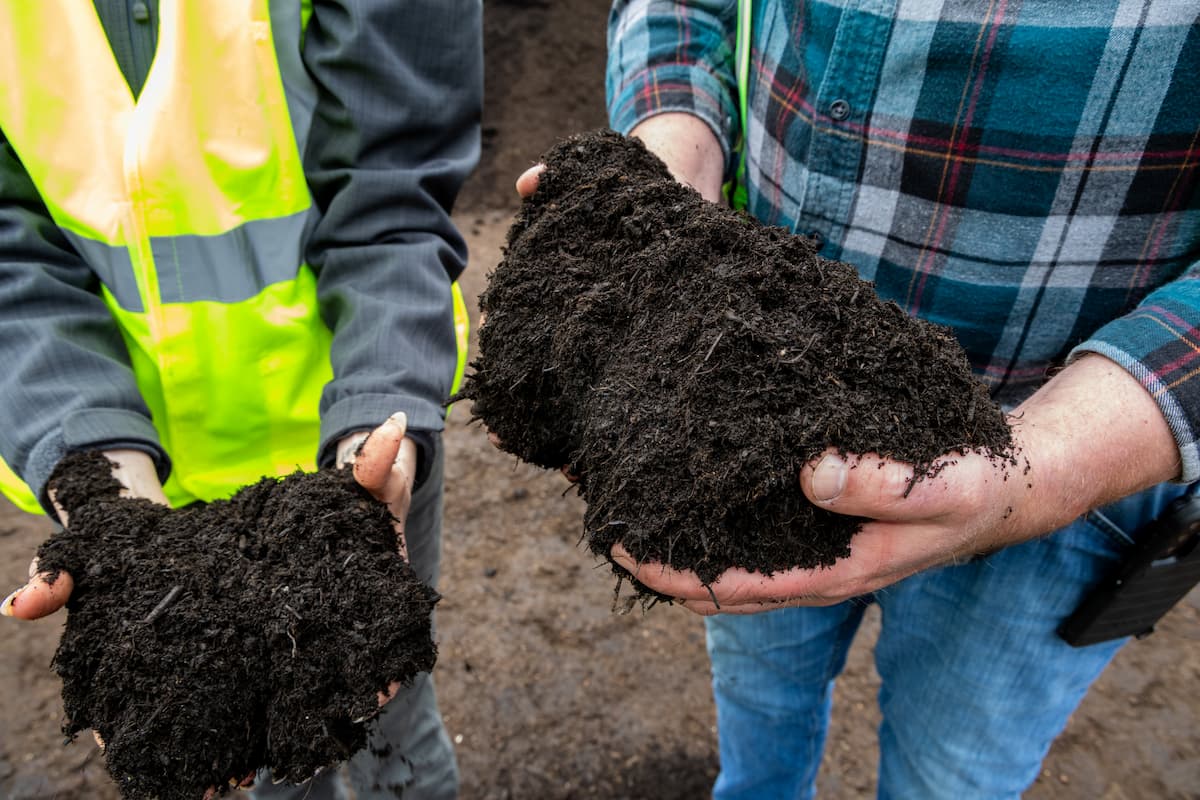
Finished compost like this is a soil enricher made of broken down organic matter.
When a used compostable fork or cup enters the compost bin at the café, that is just the start of its journey. Cedar Grove picks up the Aquarium’s compostable materials, which also includes other organic waste and paper towels, and takes them to their composting facility. There, it is processed and refined into high-quality compost.
After that, the compost gets put to work at Sound Sustainable Farms, an organic farm in Redmond that is also operated by Cedar Grove, where it enriches the soil for local produce, which can be enjoyed by many businesses and community members.
Available produce at Sound Sustainable Farms varies by season, but the Aquarium mainly purchases leafy greens like lettuce and kale. We strive to source as much produce as possible from them and plan to buy even more as they continue to scale up their operations.
Cedar Grove’s rich compost is also used by other organizations, including the City of Seattle, and can be purchased by anyone. That means the Aquarium’s food waste goes on to support gardens, farms and green spaces across the region. Through the composting process, the Aquarium and our community can participate in “closing the loop” on sustainability, where discarded “waste” can actually be processed and used in a way that allows for future growth.
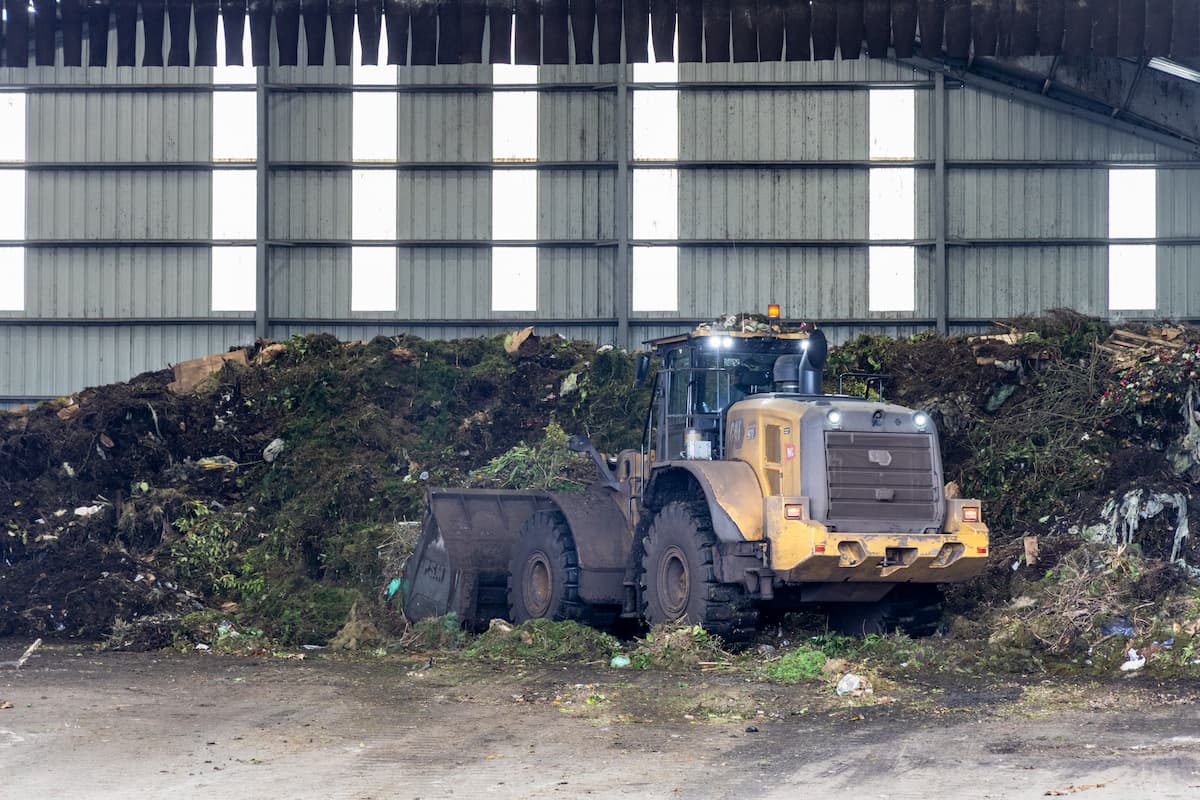
By composting food scraps, yard waste and other organic matter, Cedar Grove diverts hundreds of thousands of tons of waste from landfills every year.
The Seattle Aquarium Café also recently took another exciting step toward sustainability by swapping out gas-powered food prep equipment for electric appliances earlier this year.
We all have a part to play in caring for the environment, including by making more conscious decisions about the ways we choose, prep, store and dispose of our food and other waste. So, the next time you’re at the Seattle Aquarium, double check before tossing something out. We’ve got some handy signs in the café to help you sort your “trash.” Because that napkin or spoon could have a second life nourishing somebody’s lunch.

The next time you dine at the Seattle Aquarium Café, you’ll be asked to put food waste and compostable packaging into one of our green compost bins.
What happens to the contents of that bin after you leave the Aquarium? To find out, we visited a local facility operated by Cedar Grove, which provides the compostable packaging used in our café and processes our food waste.
Air, water, wood and microbes form a composting dream team. Together, they undergo a process of around 49 days that produces compost. Cedar Grove then further ages that compost for 12 to 18 months to allow it to mature into a high-quality product that’s ready to be sold!
Follow along to see how your waste is transformed into nutrient-rich compost that helps plants grow and even filters harmful chemicals from run-off along highways! (Hungry for more? Dive into how your compost also powers your next lunch at our café!)

The Everett facility we visited processes between 700 and 900 tons of compost each day. The high volume means that trucks visit this “tipping building” day and night to drop off new yard and food scraps from homes and businesses. A special biofilter in the back naturally filters the odors associated with unloading the material.

From the tipping building, the fresh material is ground and placed onto an electronic conveyer belt. The material passes under a powerful magnet that removes metal contaminants like nails. Then Cedar Grove shapes it into long rows that are about 10 feet tall and pulls a breathable fabric cover over each row. The cover creates a biosphere where microbes can begin to break down the material. Air and water—microbes’ essential collaborators in this process—are added to the rows.
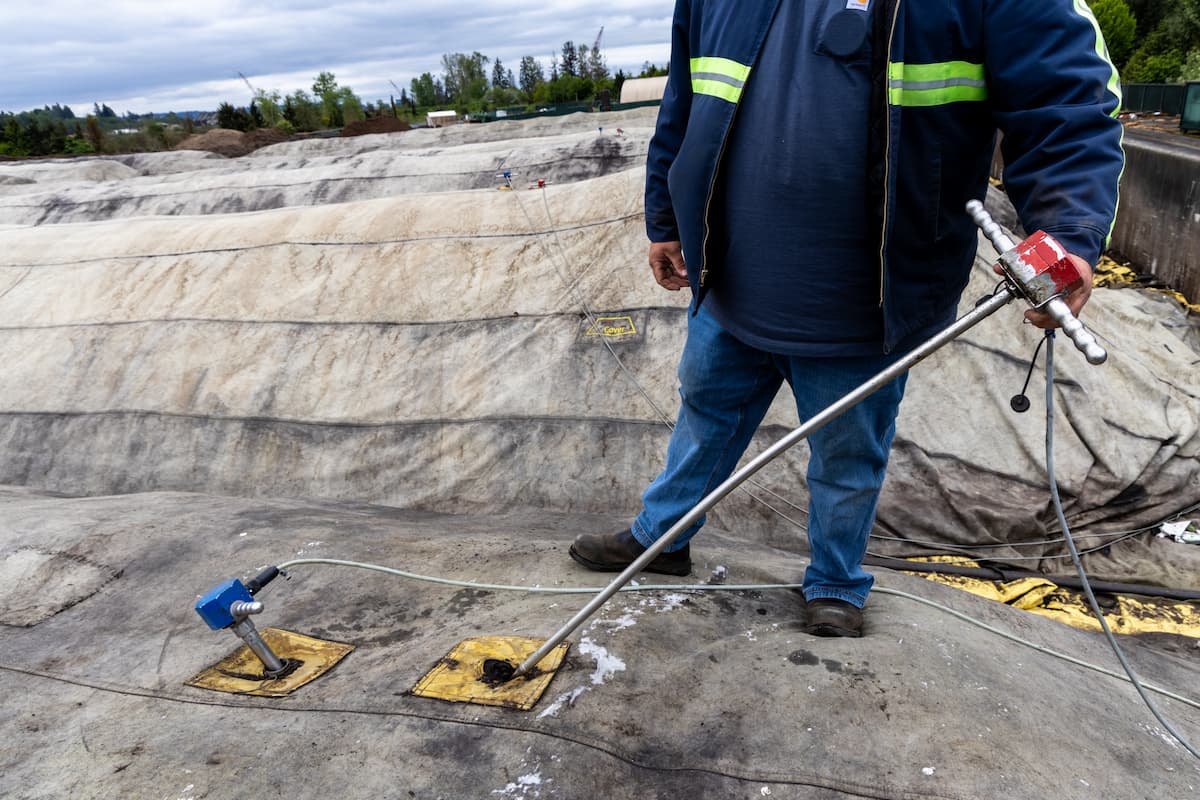
As microbes work with air and water to break down the waste, temperatures within each row naturally rise to 160 to 180 degrees Fahrenheit. Cedar Grove’s team carefully monitors oxygen levels and temperature using a probe.
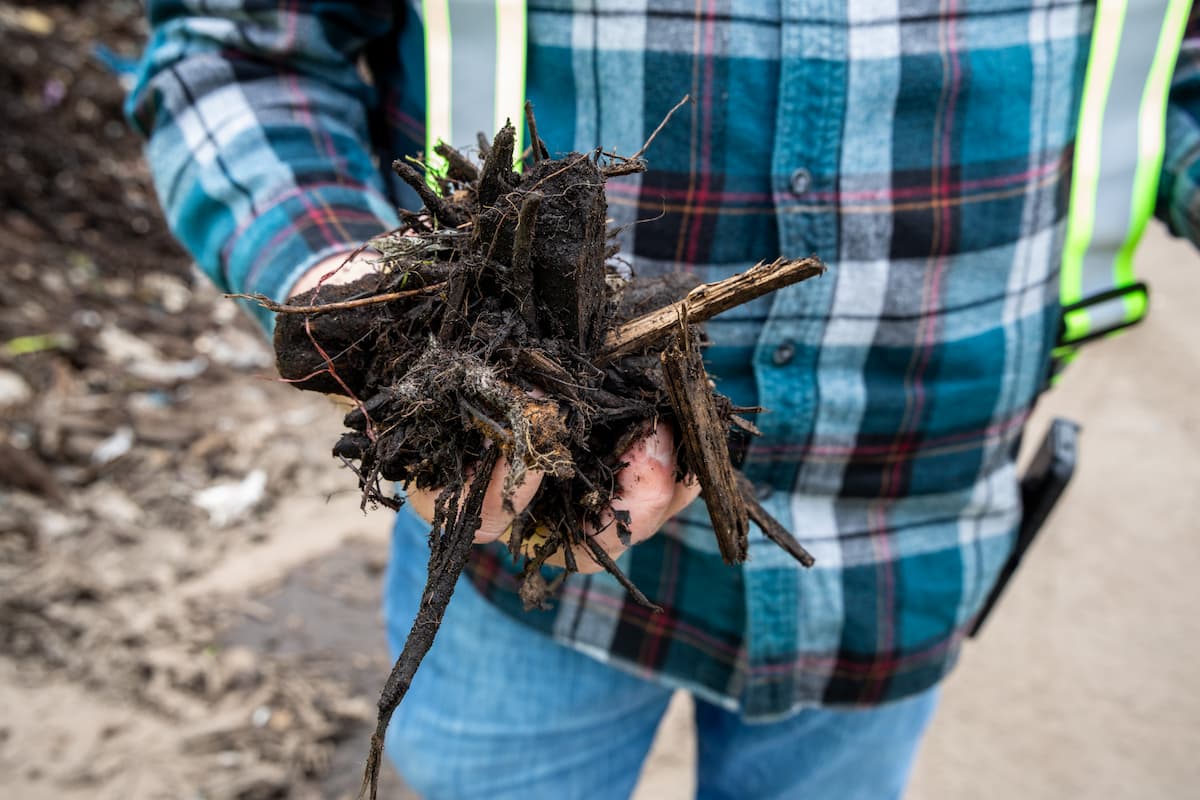
Toward the end of the 49-day process, the covering is removed from each near-final compost row. It’s starting to smell less like food waste and more like a forest floor!
Once the process is complete, the compost is screened for contaminants like plastic. Sometimes it needs one more pass through the system. Here, a Cedar Grove team member holds material that is not ready to use yet even though it has broken down substantially—and will go through these steps again.

Once the final product has been screened and approved by Cedar Grove’s team, it’s ready to sell. Compost that’s ready to sell looks like dark soil, feels velvety and smells woodsy. Cedar Grove turns our compost waste into a variety of soil products that help grow new life, prevent erosion and even line the sides of local highways—where they filter contaminants from runoff including 6PPD, a chemical that’s toxic to coho salmon.
Participating in the life cycle of composting is one of the ways the Aquarium lives its commitment to sustainability. Thank you for doing your part to keep our compost bins free of contaminants and to breathe new life into what would otherwise be waste!
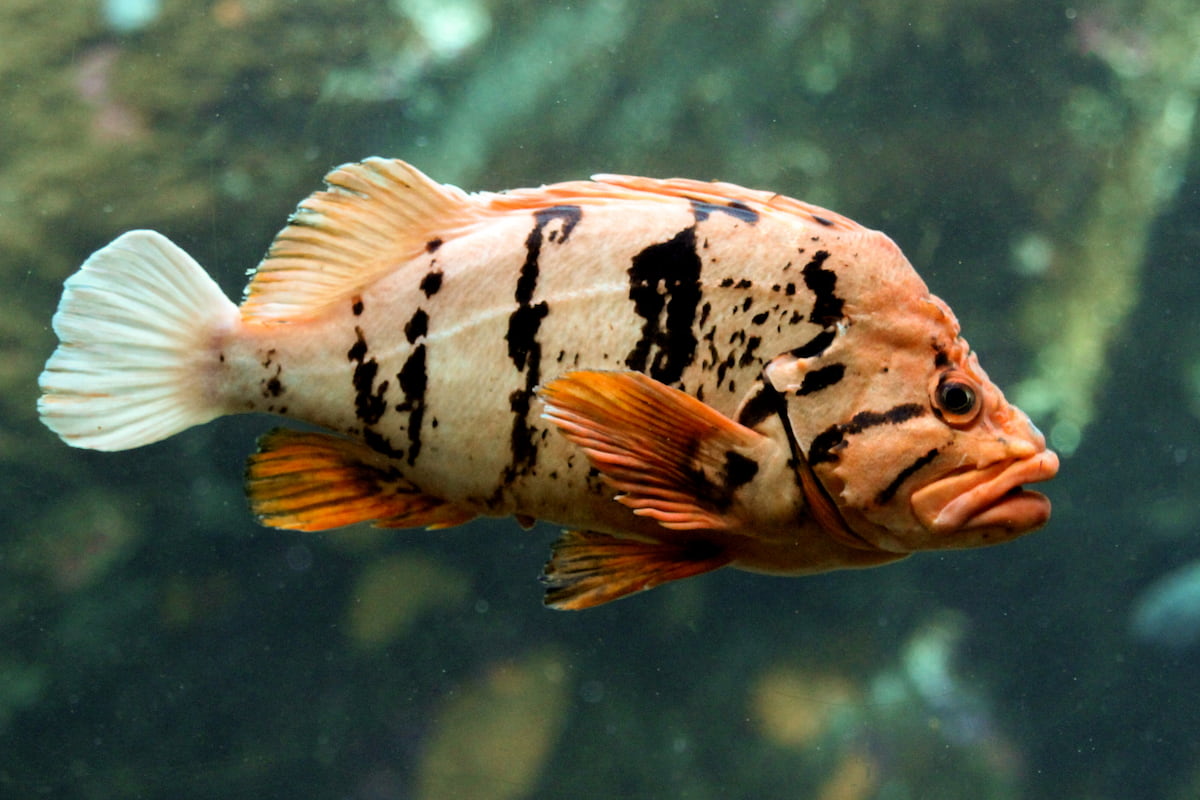
Imagine you’re on a small boat in Neah Bay, located within the traditional waters of the Qʷidiččaʔa•tx̌iq (Makah) on Washington’s remote outer coast. The wind is blowing. Frigid seawater surges around you as the boat rises and falls with the waves.
Why are you here? To scuba dive up to 70 feet below the surface and find a concrete marker, only about a foot long, on a seafloor that’s teeming with life: anemones, sponges, sea stars and more.
And that’s just the beginning: That small marker is the starting point for a survey in which you’ll swim about 280 feet (100m) ahead and behind, taking video of everything in your path—including the rockfish you’re there to count—before you run out of air. When you’re done, you’ll surface, climb back into the boat, move to another site and do it all again.
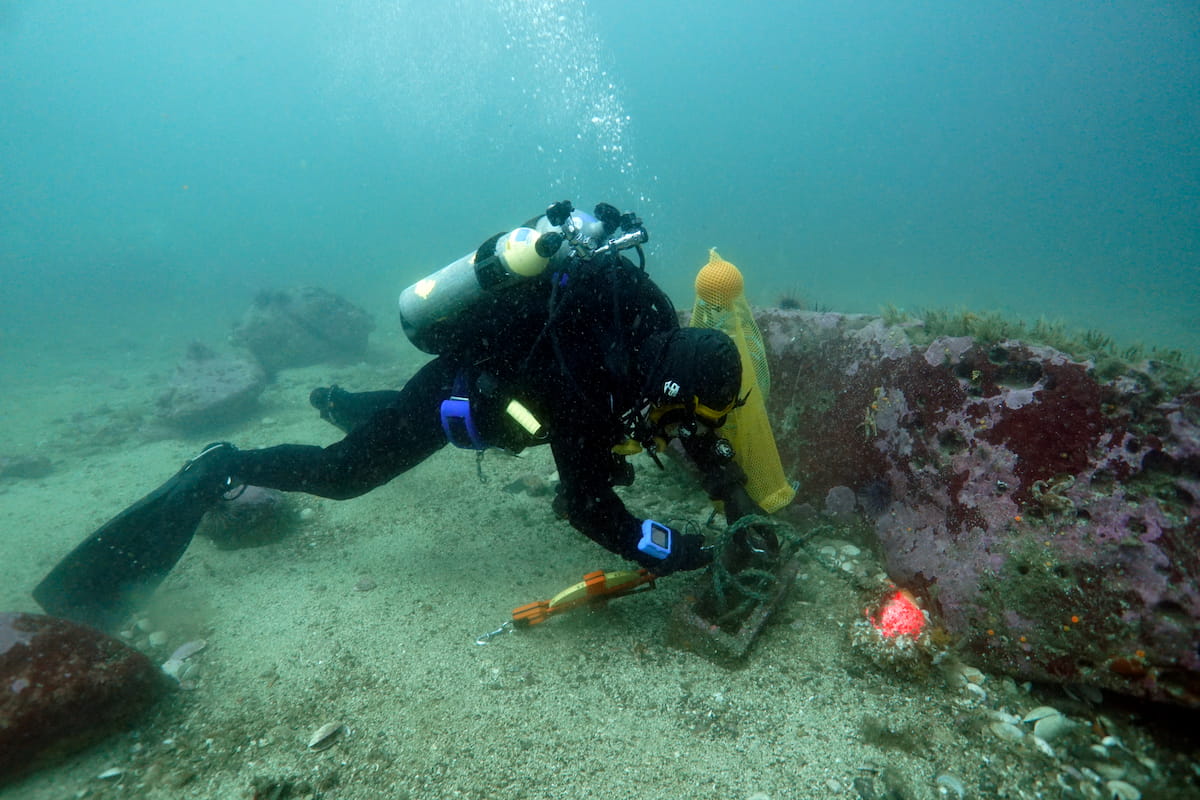
A Seattle Aquarium diver at a survey marker in Neah Bay.
The Seattle Aquarium launched our research study in Neah Bay in 2005—but our dive team has been sustainably collecting fish and invertebrates for the Aquarium’s habitats in those waters since the 1980s.
“It was very ‘fishy’ in the early years,” says Senior Conservation Research Manager Dr. Shawn Larson, who has been on staff at the Aquarium since 1995. “But as time went by, we noticed things were different. It seemed that we were seeing fewer rockfish but there was no way to know for sure. It was clear that population monitoring was needed.”
A memorandum of agreement with the Makah Tribe was signed, stating that the Tribe gives the Seattle Aquarium permission to conduct this research in their waters, and share the data collected to inform ecosystem management. And with that, our rockfish monitoring study was born.
Go below the surface of Neah Bay with our dive team!
There are over 1,000 species of rockfish around the world, with 34 of them in Washington waters (and 14 at the Seattle Aquarium!). They’re important in a variety of ways, such as:

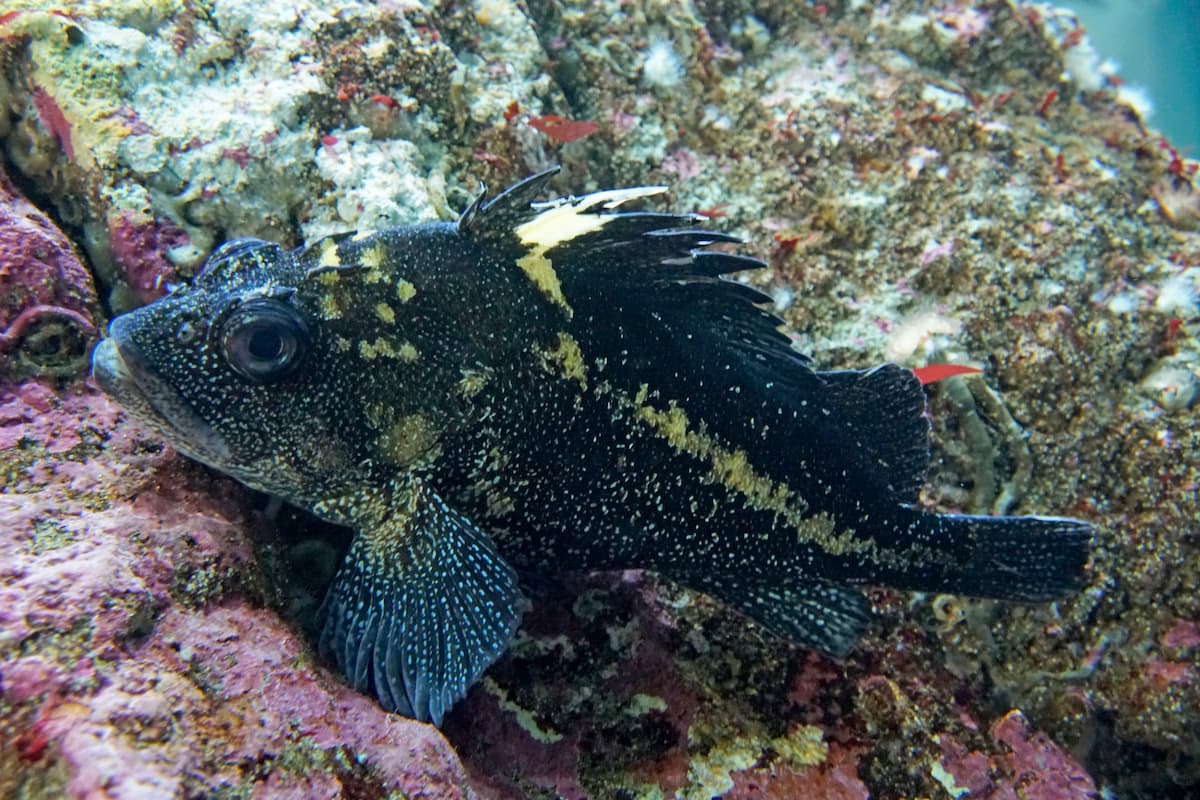
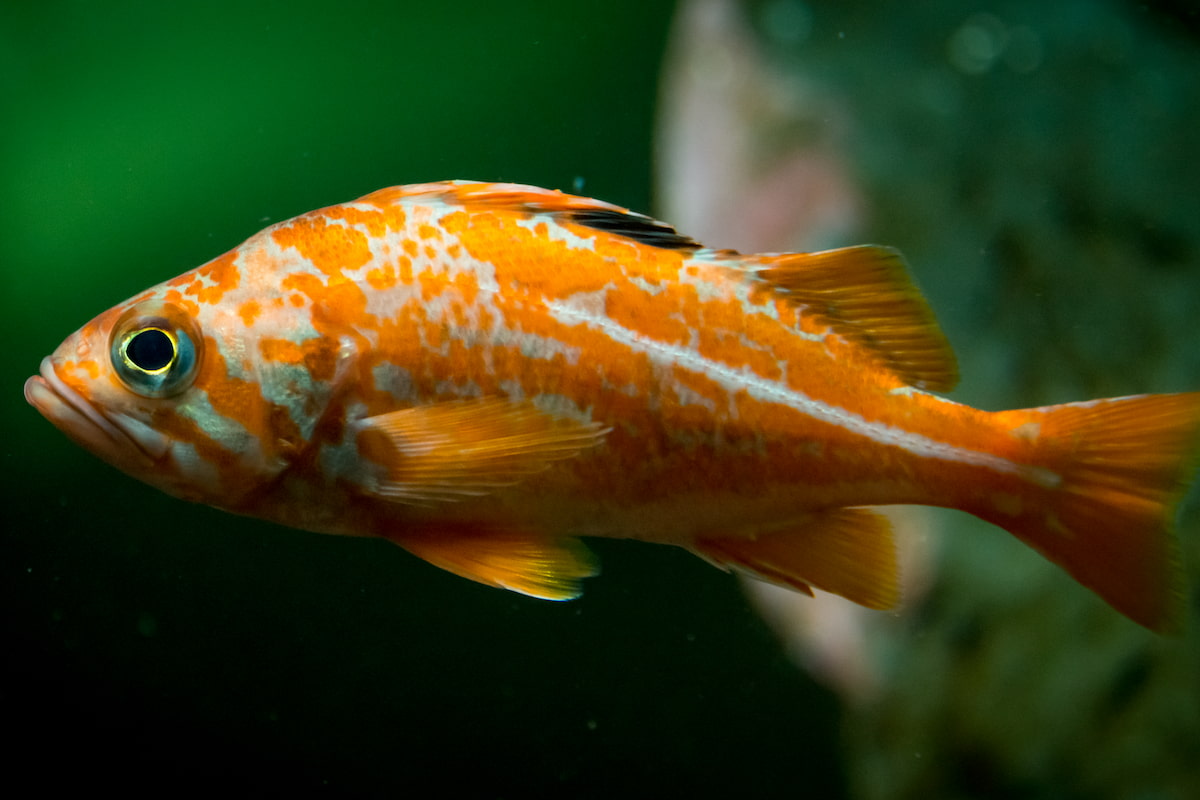
Results from this long-term research endeavor were recently published in a paper co-authored by current and former Seattle Aquarium staff members (including our own Dr. Shawn Larson), a biologist from Makah Fisheries Management, and researchers from the National Oceanic and Atmospheric Administration (NOAA).
If you’d like to take a really deep dive—including learning about the research methods and the value of using video as opposed to a more traditional slate and pencil—the paper is available to read online.
What we can share in a nutshell (or maybe a clamshell?) is that results from 19 years of research, across five different sites, revealed that the populations of rockfish in Neah Bay are stable—and even, in some species, increasing.
This is extra good news when you consider that rockfish are still legally fished (within limits) in these waters, whereas rockfish fishing in Puget Sound has been closed since 2010. “It shows that co-management of fisheries by the Makah Tribe and the state of Washington is working,” says Shawn.

A canary rockfish at one of the survey sites.
“The news is good but we need to continue monitoring, especially so we can track changes related to climate change,” comments Shawn. Future plans for the study include adding a component to measure water temperature and using a remotely operated vehicle (ROV) to take measurements in deeper, colder waters.
You also have a role in ensuring that the outlook for rockfish stays rosy—in Neah Bay and elsewhere. Follow regulations if you enjoy recreational fishing. Contact your legislators to urge support for legislation that protects the ocean and its inhabitants. Use public transportation, fly less and limit your use of single-use plastics. Looking for other ideas? Check out our act for the ocean webpage or ask one of our friendly interpreters on your next visit to the Aquarium!
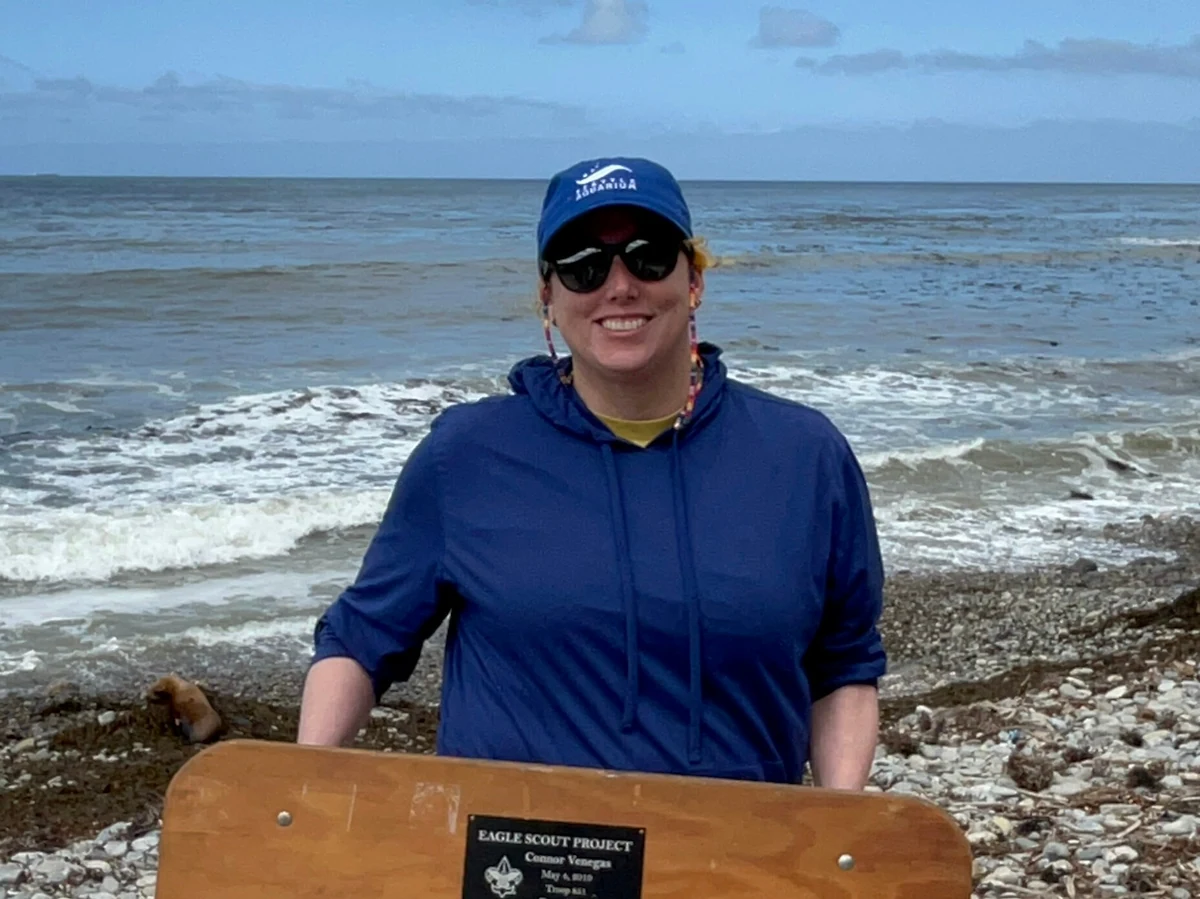
This spring, a toxic algal bloom has sickened hundreds of California sea lions, elephant seals and other marine animals along the Southern California coast. The team at the nonprofit Marine Mammal Care Center (MMCC) in Los Angeles has been hard at work, rescuing and rehabilitating animals who have become too sick to survive on their own. And they recently called on our own Senior Veterinary Technician Lindy McMorran to assist in their life-saving efforts.
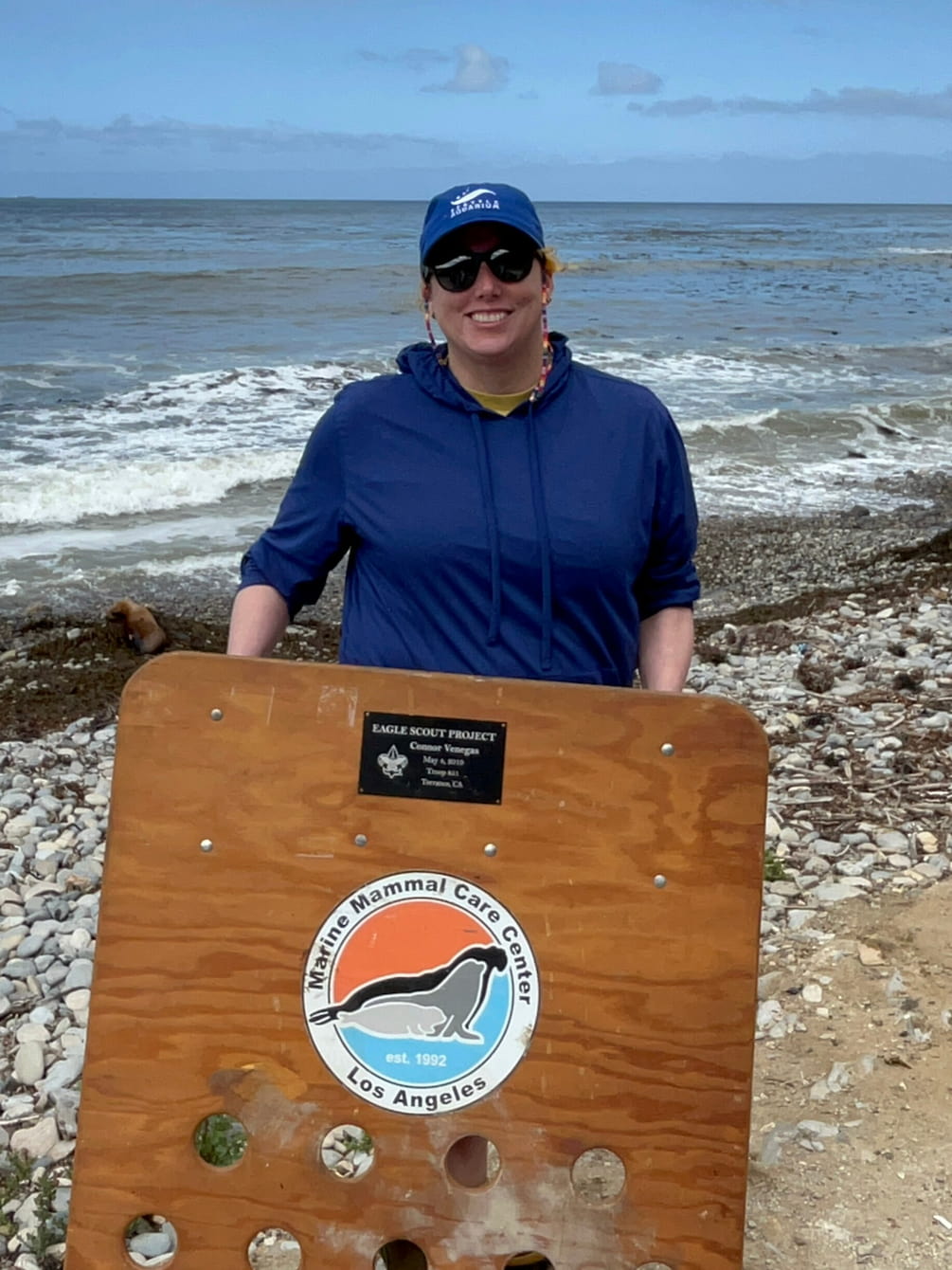
Senior Veterinary Technician Lindy McMorran on the beach after releasing a rehabilitated California sea lion back to the ocean.
The cause of all the illness? Domoic acid, a neurotoxin that’s produced by harmful algae called Pseudo-nitzschia. In the right conditions, the algae can multiply quickly, causing a bloom. The algae contain toxins; when ingested in sufficient quantity, they can sicken marine mammals or birds that eat them. Without human intervention, domoic acid in marine mammals can result in seizures, unusual behaviors and, ultimately, death.
Such blooms have become relatively common and they’re on the increase—this is the fourth year in a row that the experts at the MMCC have needed to respond to animals on Southern California shorelines following a bloom. Adding to the concern, this year’s bloom started earlier than the previous ones; the MMCC has already had more patients (meaning marine mammals) come through their hospital in 2025 than in all of 2024. Scientists suspect that climate change and warming seas are the root cause of the increase in these harmful algal blooms.
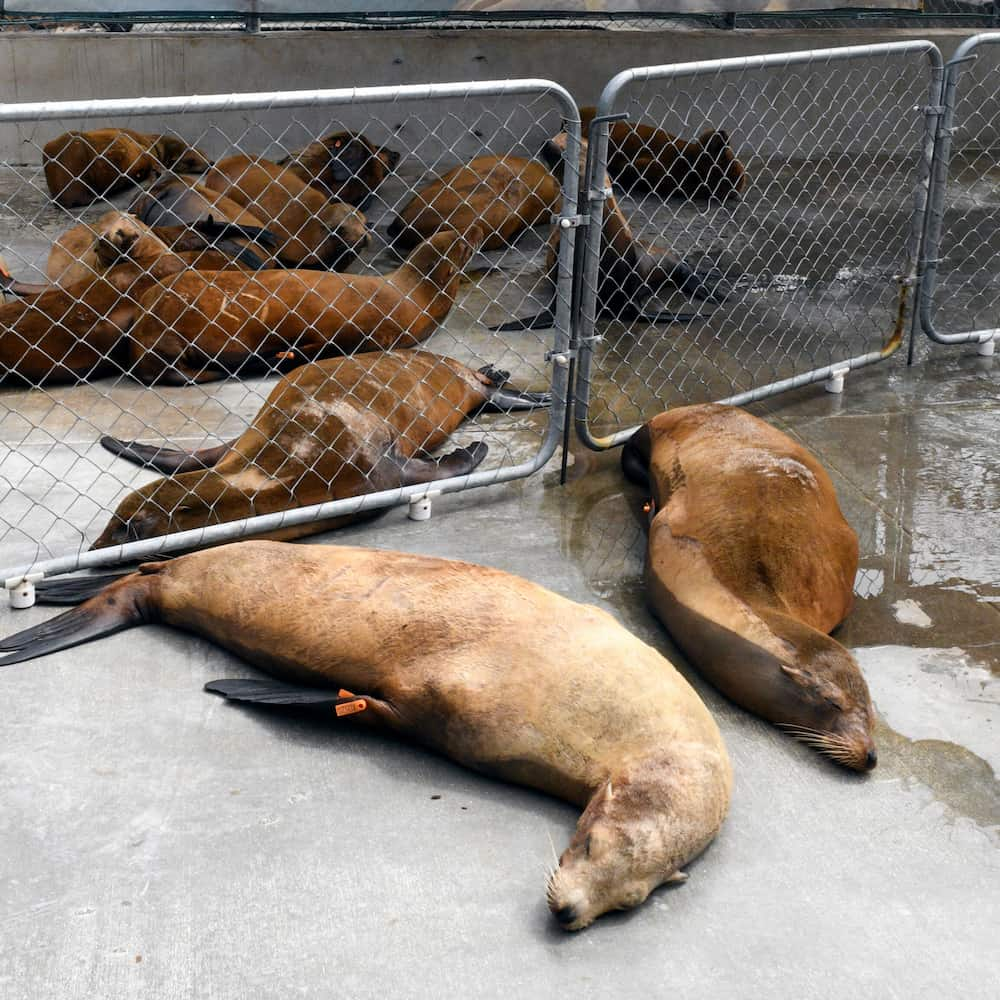
California sea lion patients in care at the MMCC.
The best hope for animals with domoic acid poisoning is to provide supportive care to assist with recovery, flushing the toxin from their systems and helping to manage the symptoms. But first, the animals must be rescued from the beach and brought to an authorized rehabilitation facility, such as the MMCC’s hospital.
“Animals might stay for as little as a few weeks to multiple months,” says Lindy. Recovery time depends on a number of factors, including the animal’s species, weight, age, severity and chronicity of symptoms, and more. “If they’re older or have had a longer exposure to domoic acid, it’s tougher on them,” Lindy adds.
Lindy is uniquely qualified to assist in these efforts. As a veterinary technician, she’s been trained to work with a variety of animals but she’s concentrated her work on marine animals in particular. Before joining us at the Aquarium, she did a sea turtle rehabilitation internship in Florida and helped with marine mammal rehabilitation in Northern California. She also volunteered with SR3, a local organization focused on marine animal rescue and rehabilitation. And, impressively, she was the second person in the continental U.S. to earn a new credential, Certified Aquatic Veterinary Technician, from the World Aquarium Veterinary Medical Association (WAVMA), in 2023. (Check out our web story to learn more!)
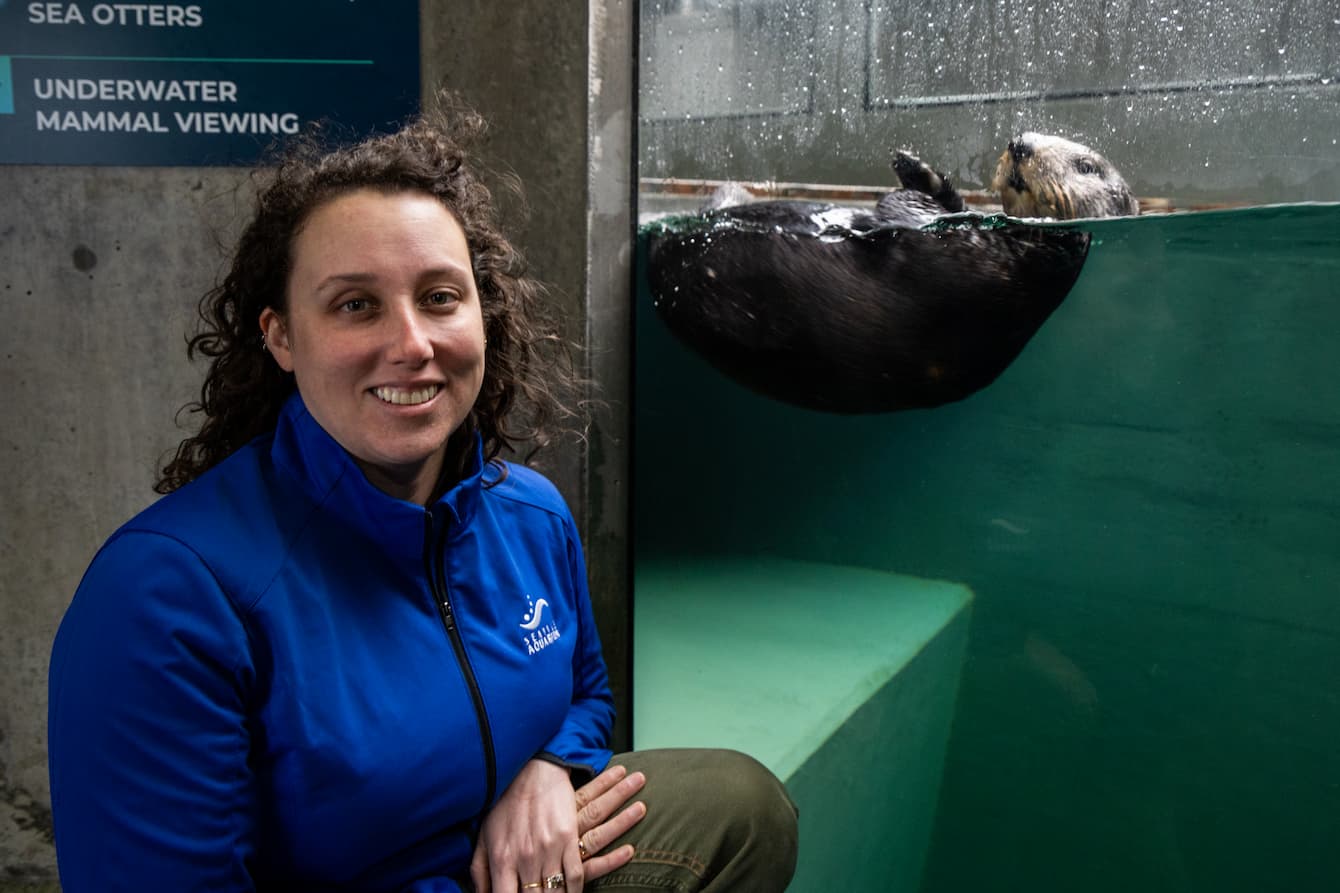
Lindy at the Seattle Aquarium’s sea otter habitat.
“There was no day that was the same,” says Lindy, speaking about her week with the MMCC. “I assisted with exit exams and medical procedures, processed lab samples, did a lot of cleaning—whatever was needed, I was happy to help. It allowed the team to catch their breath a bit and that was wonderful to see.”
“By the time I arrived on May 12, they were already admitting fewer patients than in the previous few weeks and were working on releasing patients who had been rehabilitated,” she continues. “What was impactful was seeing the shift. On my first day, we had over 80 patients; by the last day, it was more like 50.”
“We typically see about 300 patients per year, and that’s what we budget for. By April we had already over 400 patients. MMCC’s capacity is stretched when these mass strandings occur, and without the support of our network of partners we would struggle to care for our patients. Organizations like the Seattle Aquarium stepped up for us in a time of need and we are so grateful for their help.”
—Dave Bader, Chief Operations & Education Officer, Marine Mammal Care Center
Lindy was also able to assist with releases, one of the most rewarding aspects of her time with the MMCC. Animals who have received a clean bill of health are brought to a beach in crates and, after a team member opens the door, what happens next is up to the individual. “Each animal has their own exit,” comments Lindy. “Some stay, some bolt to the water, some exit and then need to take a nap on the beach,” she laughs. “It’s a great reminder that they’re all unique.”
“Due to the hard work and dedication of MMCC’s staff and volunteers, we were able to release about 25 animals while I was there,” she concludes. “I was grateful for the opportunity to provide a little help during a challenging time.”
Lindy McMorran assists with the release of a California sea lion. Herding boards are used to help direct animals toward the water, protecting the animals and any nearby people.
“Algal blooms are an increasing concern,” says Lindy, “And the kind of thing that’s taking place in Southern California could also happen in the Pacific Northwest.” As we noted at the top of this story, climate change and warming ocean waters are thought to be behind the increase in harmful algal blooms.
The good news is that each of us can make a difference for ocean health. A few ideas: Contact your legislators to urge support for legislation that protects the ocean and its inhabitants. Use public transportation, fly less, and limit your use of single-use plastics. Sign up for coastal/beach cleanups, as well as opportunities along rivers, streams and creeks—most of which drain into Earth’s one ocean. Looking for other ideas? Check out our act for the ocean webpage or ask one of our friendly interpreters on your next visit to the Aquarium!
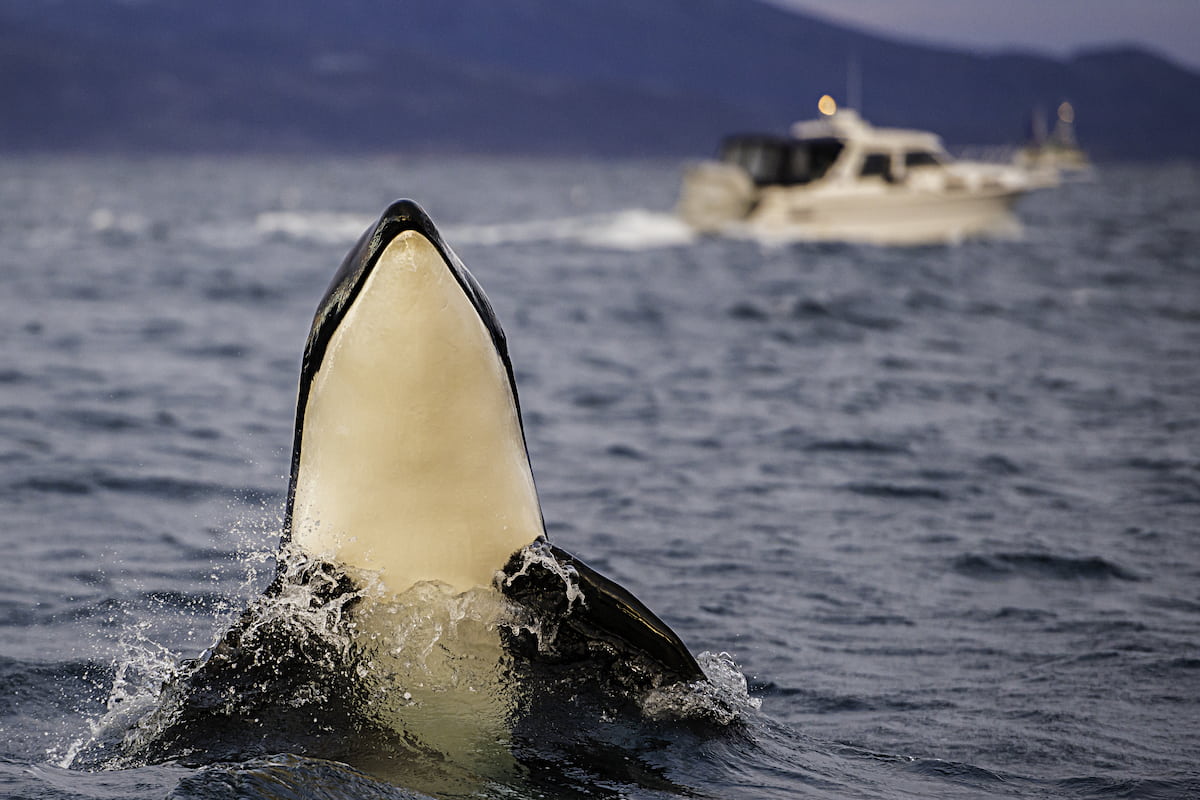
This session had a lot of long days, fast-moving advocacy efforts, and even some trips to Olympia. Check out what happened—in the imagined voices of some of our marine friends!
“I’m thrilled to announce that Washington has a new state symbol: me!”
“On April 16, Governor Ferguson signed HB 1631, officially designating bull kelp forests—aka me—as the marine forest of Washington. He also declared April 16, 2025, to be Bull Kelp Day and named one of the Aquarium’s Youth Ocean Advocates, who worked with Puget Sound Restoration Fund to come up with the idea for this bill, Washingtonian for a day!
Thanks to Representative Nance, who I’ve heard was a great ‘kelp’ and champion, this bill is a key step in acknowledging the importance of bull kelp forests and the critical role we play in the health of the Salish Sea.”
—Bull kelp forest
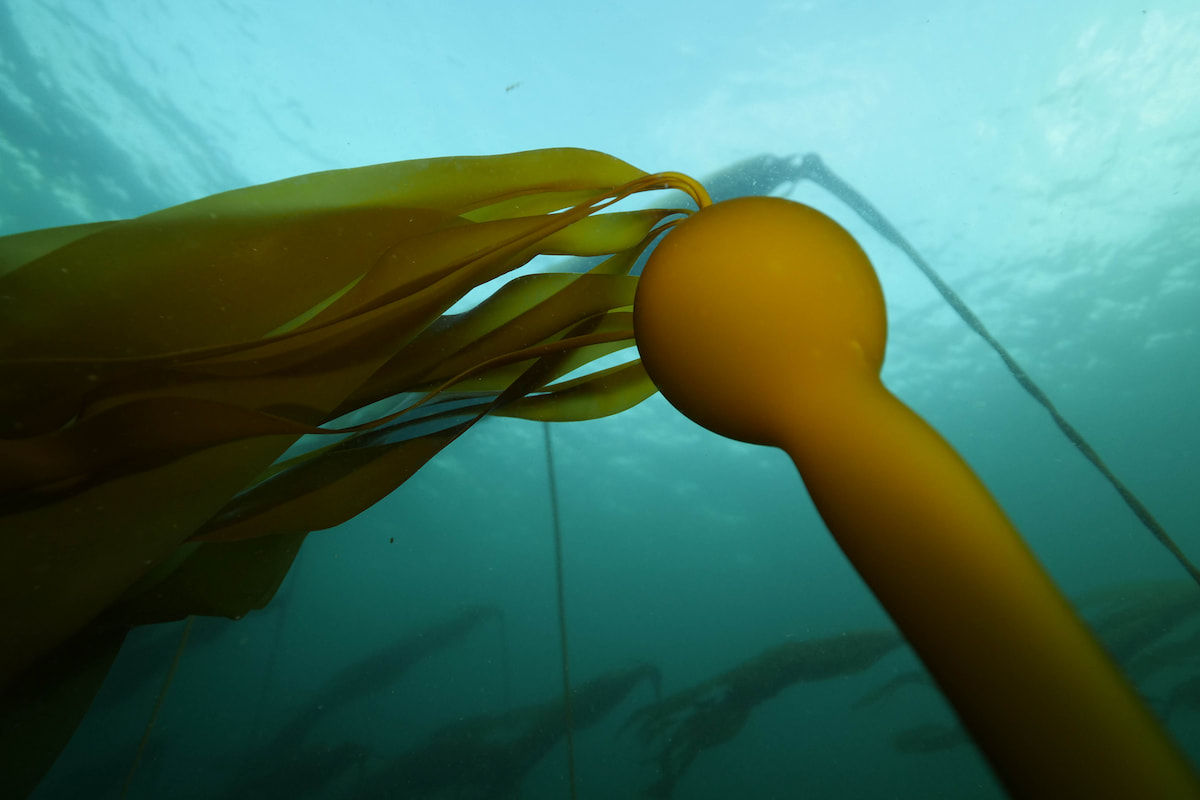
It’s critical to emphasize the importance of bull kelp right now because approximately 80% of bull kelp forests have disappeared, particularly in south and central Puget Sound. Check out our web story to learn more!
“That’s a ‘WRAP’ on plastic!”
“Jellyfish are some of my favorite snacks and let me tell you, if you think cold fries are a bummer, there’s nothing worse than chomping on a plastic bag. Or trying to lay my eggs in sand mixed with tiny pieces of plastic trash.
For the last five years, the ‘turtley’ awesome humans at the Seattle Aquarium have been working with rad environmental champions Representative Berry, Senator Lovelett and other partners to advocate for a bill that would help reduce plastic and other packaging materials. Previous versions of the bill, the WRAP Act and the ReWRAP Act, didn’t make it over the finish line—but the latest one, the Recycling Reform Act (SB 5284), finally passed the legislature!
This bill will ensure curbside recycling services for all Washingtonians—including the 11 jurisdictions currently without—and incentivize producers to use packaging that’s more recyclable, reusable or compostable. This is a big step in reducing plastic pollution so I, my friends and our families can swim, dive and snack safely. Truly time for a shell-ebration!”
—Sea turtle
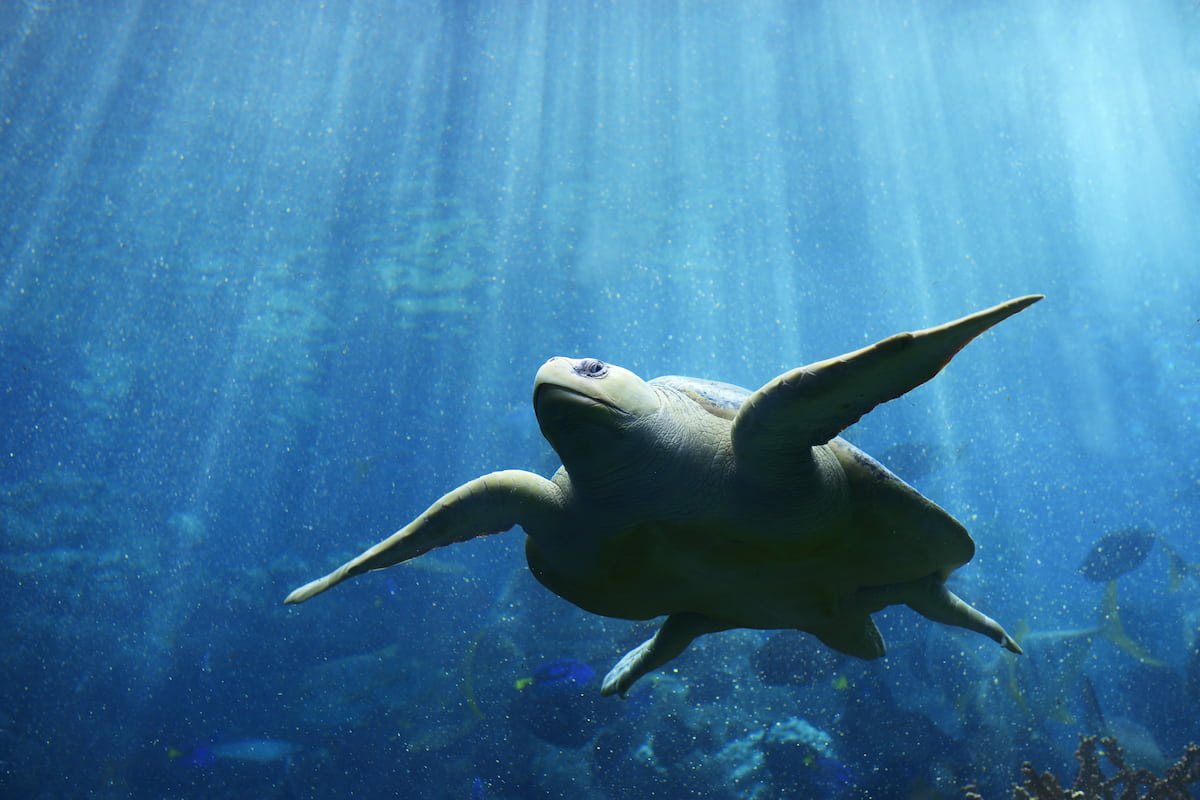
In addition to sea turtles, hundreds of marine species—including whales, salmon and seals—ingest plastic pellets or become entangled in plastic. The Recycling Reform Act is an important step in reducing the amount of plastic that ends up in the ocean.
“You might’ve heard the phrase, ‘just keep swimming,’ but do you ever think about what you’re swimming in?”
“I sure do. To keep myself and my fellow salmon healthy, it’s important that the waterways we’re swimming, eating and reproducing in are clean and free of pollutants and toxics. And I hate to talk dirty about Washington, but hundreds of sewage spills occur across the state every year. I couldn’t read a spill alert—but even you humans aren’t getting notified, since information isn’t typically available when a spill has occurred.
That’s why I’m sending my best fishes, er, wishes, to the Aquarium’s policy team for helping to pass HB 1670, championed by Rep. Hunt and Sen. Slatter. As a result, there will be a public-facing website so humans can look up information about sewage spills to help improve transparency around human and environmental health. Now can someone teach me how to read?”
—Salmon
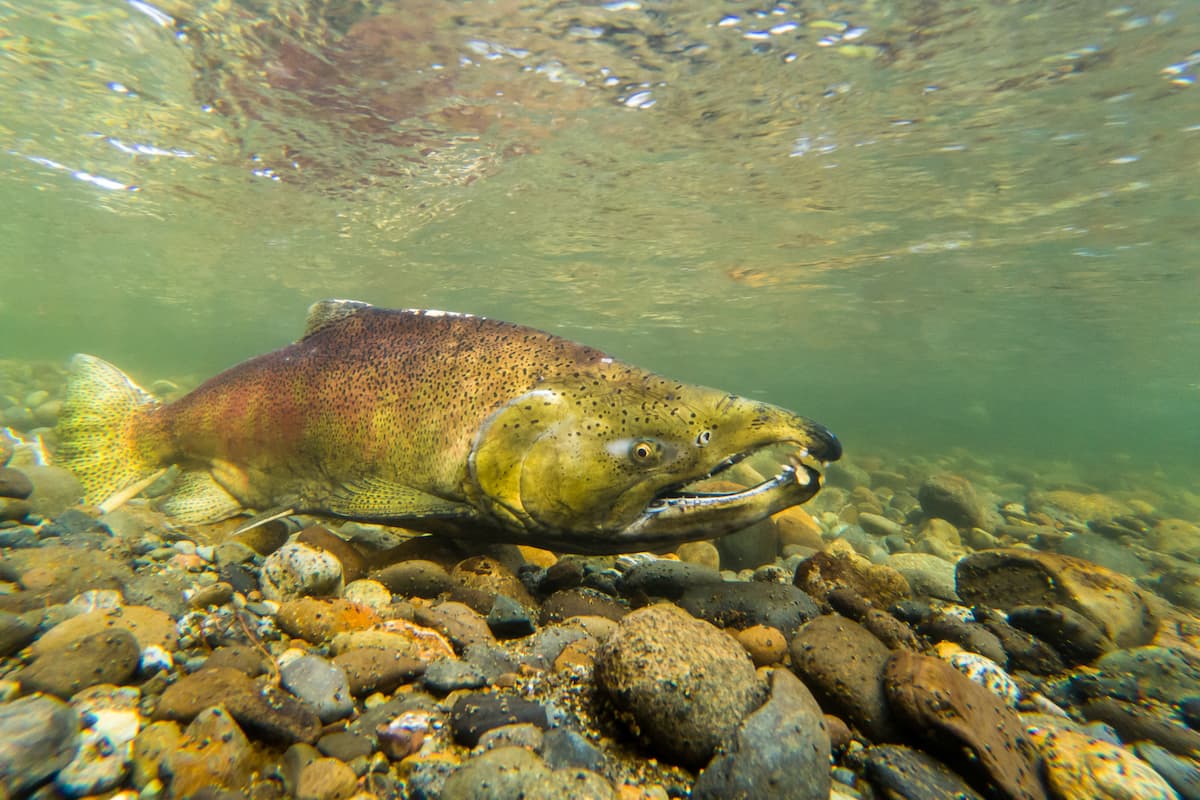
Salmon play a critical role in the health and functioning of their ecosystems. Even though their populations are relatively small, they impact the wellbeing of many other species and can serve as an indicator of the overall health of their habitats.
“You probably know that orcas like me breathe air, just like humans, but did you know that air pollution is bad for us, too?”
“And, while most things aren’t as black and white as I am, this issue is. Polluted air can lead to respiratory issues, which can lead to other health conditions. That’s why I’m so excited that the Aquarium has been supporting the CURB Act (HB 1303), which is led by Front & Centered and Rep. Mena. While it didn’t pass this session, we’re going to keep trying!
Unlike my tail, supporting this bill is no ‘fluke.’ This legislation would require environmental justice impact statements to evaluate environmental and public health risks as well as cumulative impacts on overburdened communities. People from such communities typically live about 2.5 years less than others. Some air pollutants are incredibly persistent and aren’t broken down easily, so they can accumulate and persist as they move through the food chain. Yep, you’re right; this is concerning for apex predators like me. That’s why this bill is important to the health of Puget Sound and everyone who depends on clean air—including marine mammals like yours truly!”
—Orca

Along with clean air and water, orcas need plenty of salmon to thrive. Learn more about the threats they face and how you can take action to make a difference on our Helping orcas webpage!
“Just like my sea turtle friends, sometimes I mistake human-made materials for food or natural materials.”
“I’m thrifty and I always have been. Finding different materials to help build my nest is a great way to create a cozy, safe home for my babies. I’m also thrifty when it comes to finding food, often looking for it on the beach as well as in the water. But it can be hard to tell what’s natural and what isn’t.
My feathers are all I need to look and feel good, so I can’t relate to the human need to buy so many clothes. But I do know that fashion waste, particularly fast fashion waste, is a big problem. It’s estimated that 100 billion pieces of clothing are manufactured each year and 35% of the materials in the fashion industry supply chain end up as waste¹, often in oceans and washed up on beaches.
HB 1107, championed by Rep. Mena, didn’t pass but will hopefully be reintroduced next session. It would require manufacturers to be more transparent about the impacts of their clothing—from chemicals in the materials to how unwanted and excess waste is managed.”
—Seabird
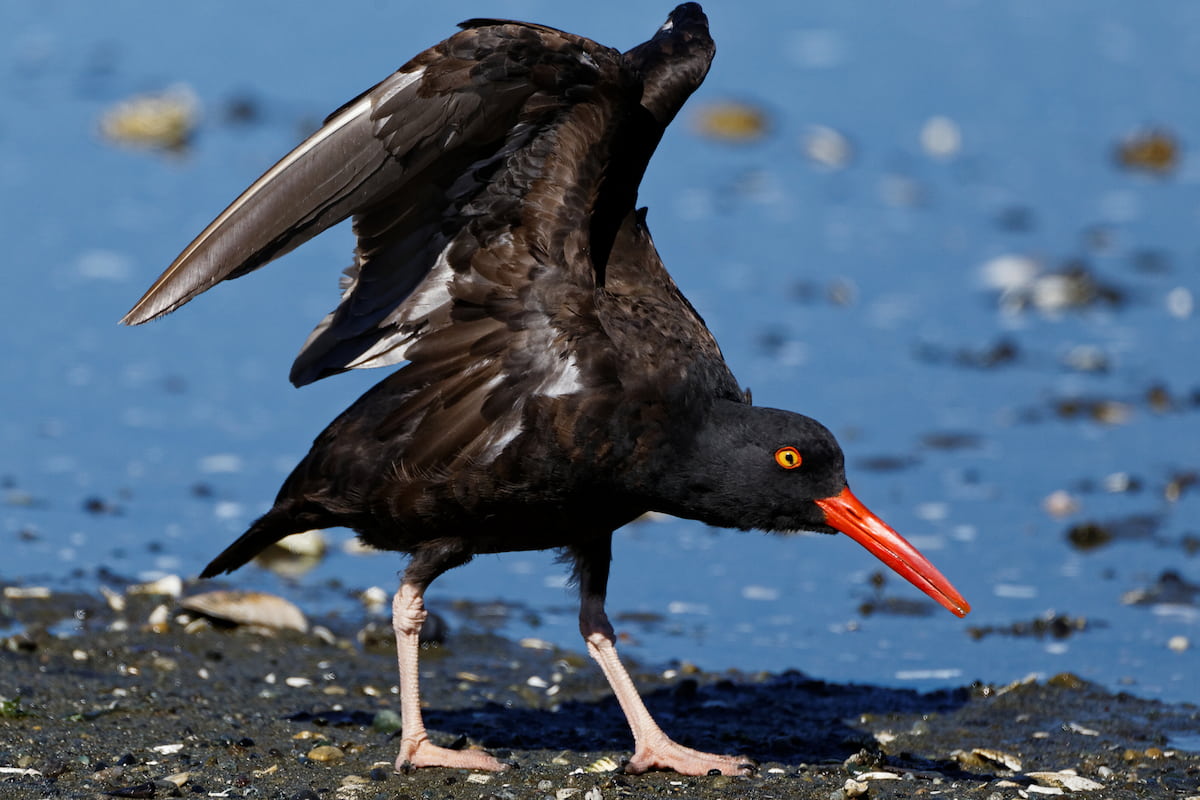
Despite their name, oysters aren’t the favorite food of black oystercatchers. They’re more often found eating mussels, chitons and limpets. Learn more on our webpage—then come see this beautiful species in person at the Aquarium!
Thanks to our imaginary marine pals for sharing their thoughts about the 2025 state legislative session. Interested in learning more about the Aquarium’s policy work—and opportunities to raise your voice in support of the marine environment? Visit our Influencing policy webpage.
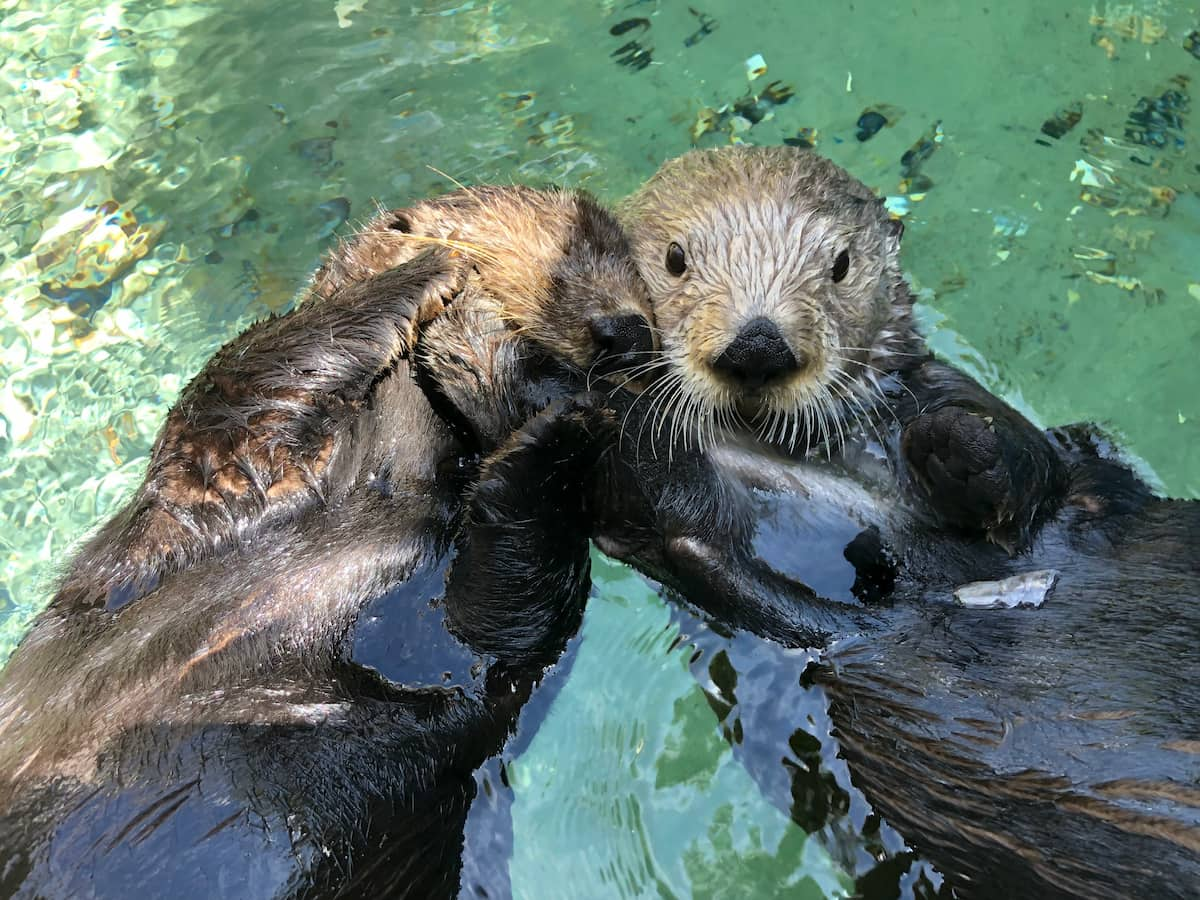
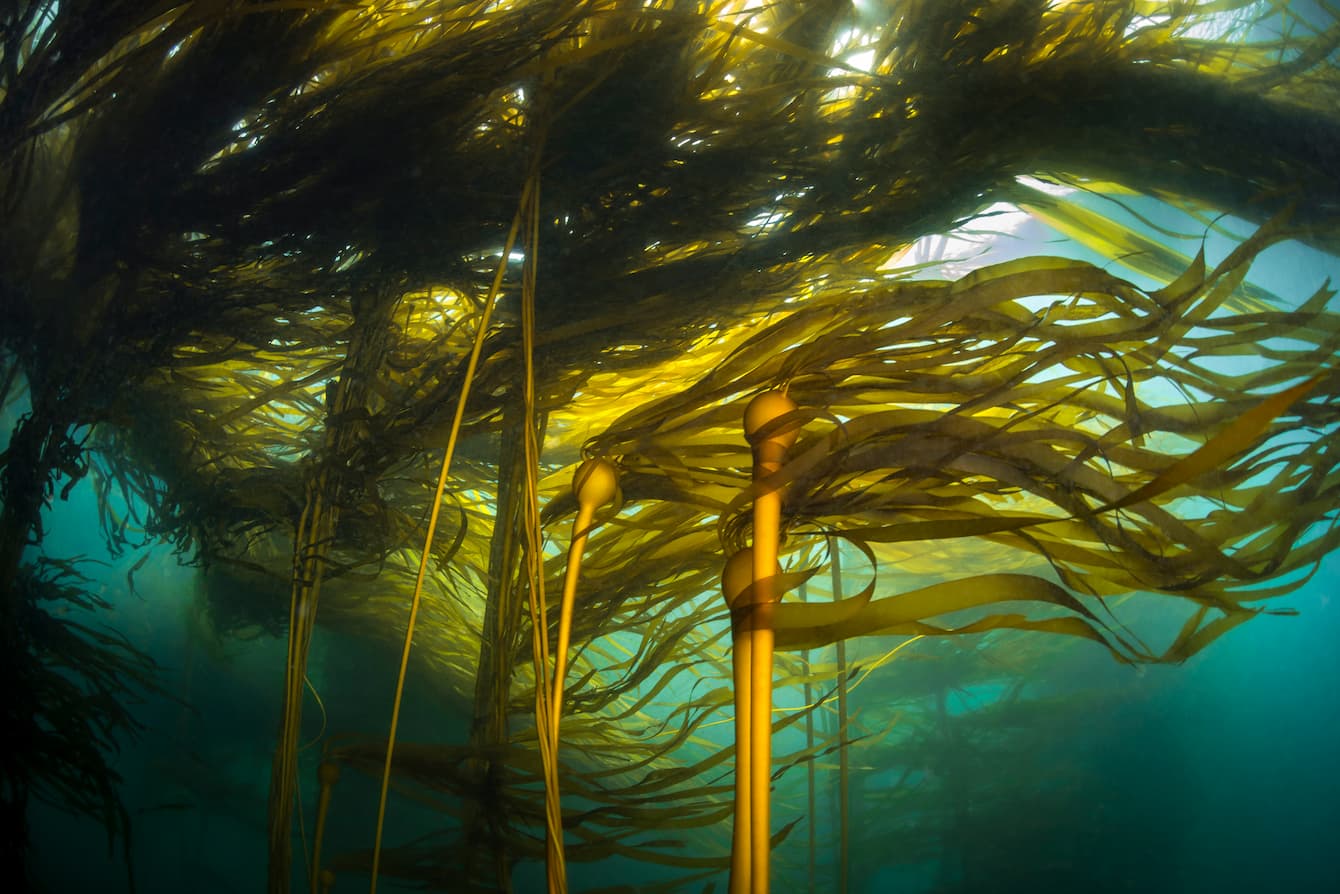
Kelp forests play an integral role in Puget Sound’s ecosystem. Washington state is home to 22 species of kelp—more than anywhere else in the world apart from Japan. Bull kelp is the most prolific species, easily identifiable from its size: the stalk, called a “stipe,” can reach up to 100 feet (30 meters) tall.
Underwater forests formed by bull kelp are important parts of the West Coast’s ecosystem, and they are hotspots of biodiversity. They provide food and shelter for other species, including many with whom we humans interact and benefit, like salmon and pinto abalone.

Bull kelp is not only beautiful—It provides food and shelter to many beloved local marine species. Join our Youth Ocean Advocates and partners in their quest to make bull kelp forests the official marine forest of Washington state.
A Seattle Aquarium Youth Ocean Advocate, Sebastian, developed the idea for House Bill 1631 in consultation with the Puget Sound Restoration Fund. This bill, championed and sponsored by State Representative Greg Nance (23rd district) and currently under consideration in the state legislature, would designate bull kelp forests the official marine forest of Washington. State symbol bills are a fun way to raise awareness about features of our state—often flora and fauna—that are important to Washingtonians.
It’s critical to emphasize the importance of bull kelp right now because approximately 80% of bull kelp forests have disappeared, particularly in the south and central Puget Sound. While we’re still learning more about the threats to bull kelp (as well as other kelp and eelgrass species), warming water temperatures, ocean acidification and nearshore development have significantly contributed to its decline.
Sebastian was inspired to educate more people about the importance of bull kelp forests.
"These underwater ‘forests’ are so special to me because their lives hold up countless other lives, from humans like us, to salmon, orcas, pinto abalone and many more."
—Sebastian, Seattle Aquarium Youth Ocean Advocate
“But unfortunately, bull kelp (like other amazing species) is in dire need of help,” Sebastian says. It’s true—most people don’t know about the critical importance bull kelp forests play in the health of the Salish Sea. Bull kelp forests provide resting and foraging grounds for migrating salmon and even help sea otter moms avoid losing their pups, as they tether the pups to the bull kelp while they forage for food.
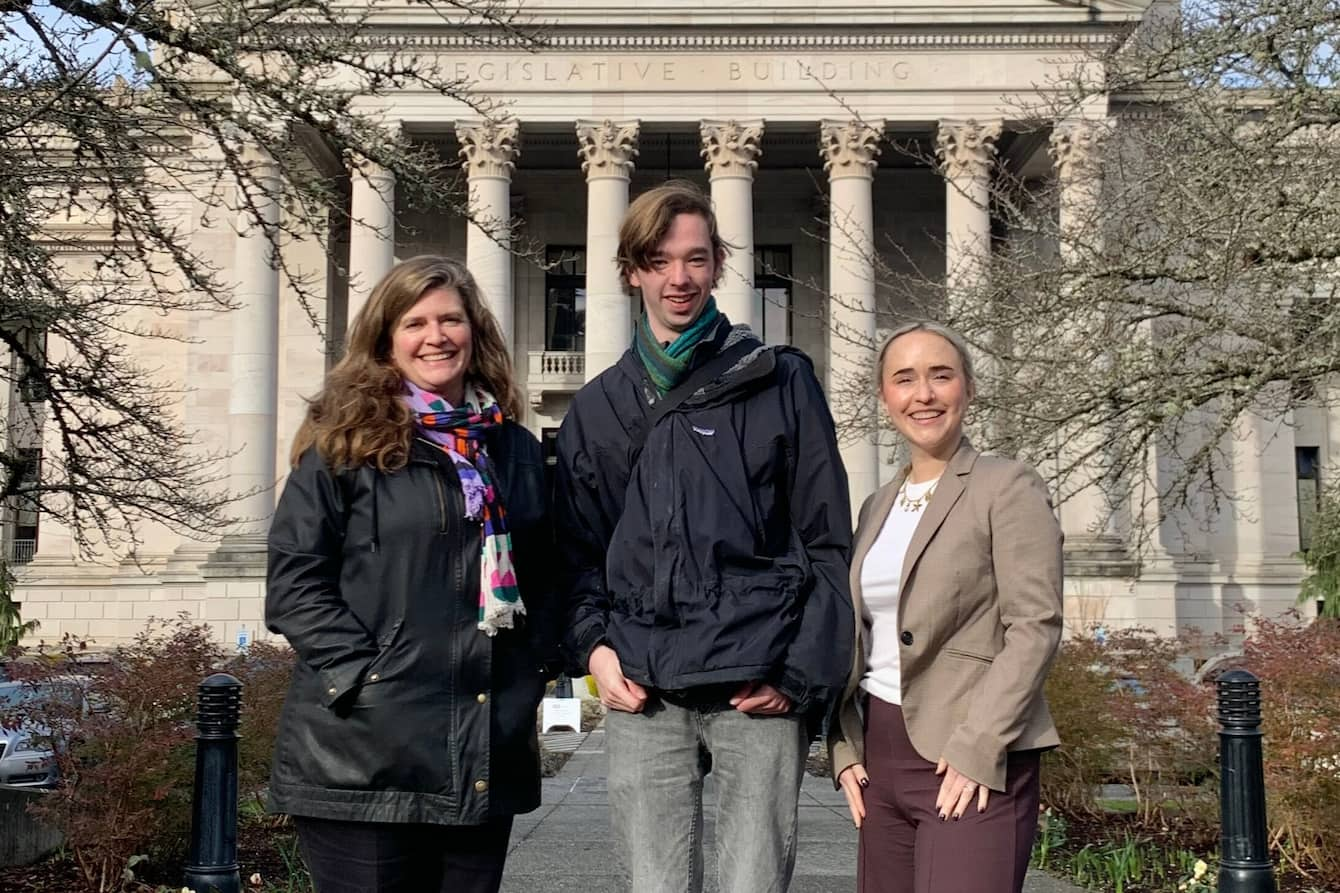
Left to right: Jodie Toft of Puget Sound Restoration Fund, Youth Ocean Advocate Sebastian and Miguela Marzolf of the Aquarium.
HB 1631 has helped Mik, another Youth Ocean Advocate, learn more about bull kelp and the marine environment. “Bull kelp has opened new doors and shed light on the interesting aspects of food chains and biodiversity that I did not know about before,” Mik says. “Throughout the past few months of working on this with amazing people, I’ve become more and more immersed in a world of marine consciousness and government action than I had before. Bull kelp may be overlooked by many, but it’s allowed me to meet new people and learn more about local waters. It’s easy to tell how much staff and volunteers at the Seattle Aquarium care about Puget Sound, and I’m lucky to be a part of something that magnifies our shared connection.”
Youth Ocean Advocate Ellen claims she used to “take bull kelp forests for granted.”
“They’re very inconspicuous,” she says, “always pictured in the background of images showing sea otters playing or colorful schools of fish.” Ellen hopes that HB 1631 will help bring bull kelp forests into the public’s attention.
"I got involved in advocating for bull kelp forests to be made a Washington state symbol because I believe that the importance of kelp must be recognized—but more than that, that the entire bull kelp forest ecosystem must be valued and considered with the same regard as our forests on land."
—Ellen, Seattle Aquarium Youth Ocean Advocate
Sebastian, Mik and Ellen hope that, as working on the bill has helped them learn new concepts, making bull kelp an official state symbol will help educate more of the public about its importance in maintaining a healthy and productive Salish Sea.
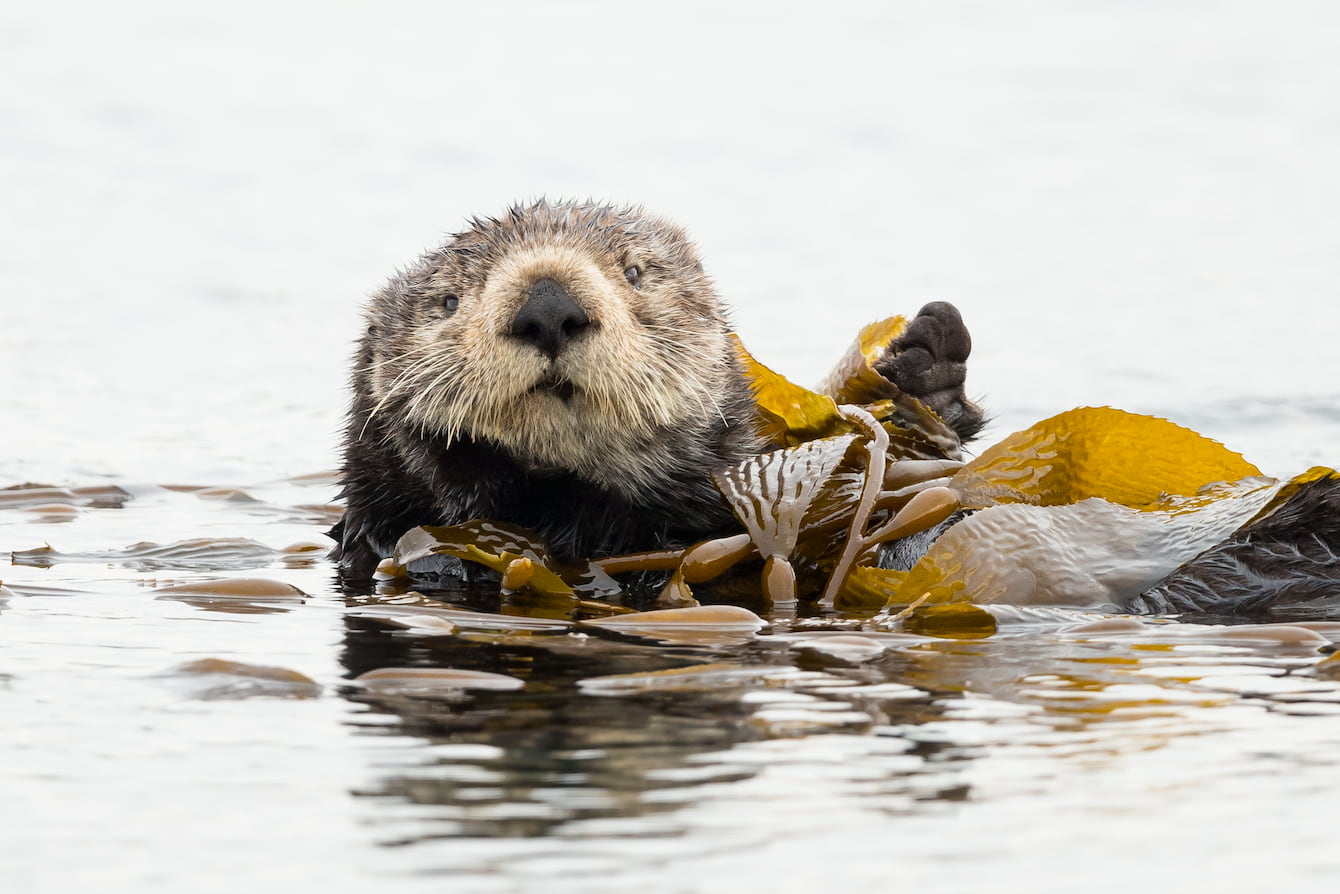
Bull kelp forests support wild populations of sea otters and other beloved local species.
Want to give these amazing efforts a boost? You can support the bill by contacting your state representatives via the legislative hotline at (800) 562-6000 and urging them to vote yes on HB 1631.